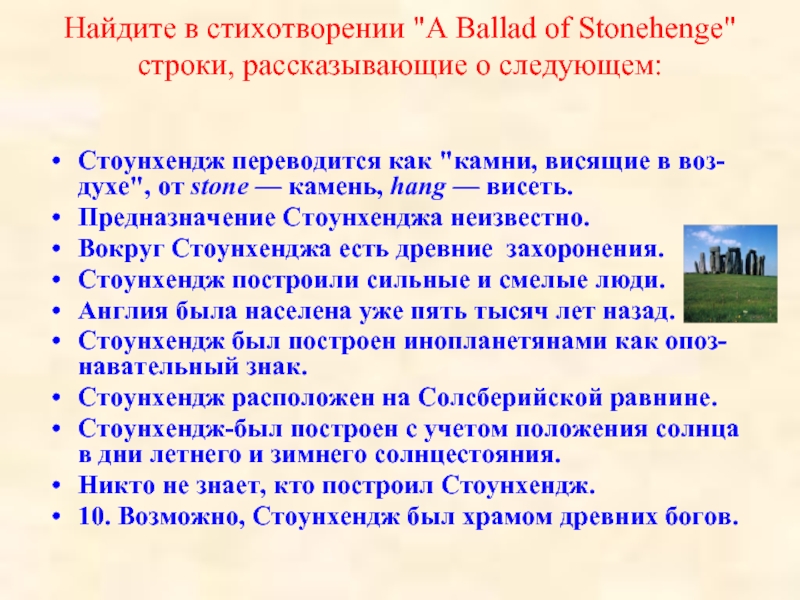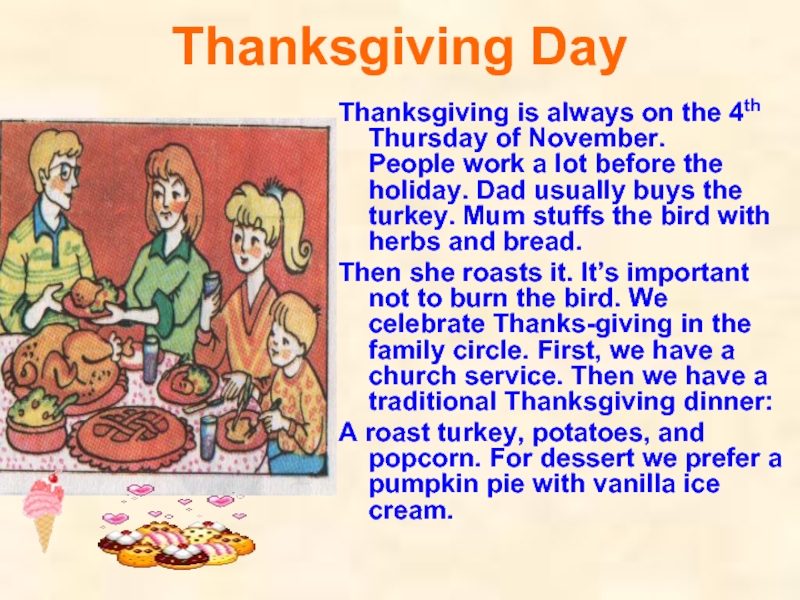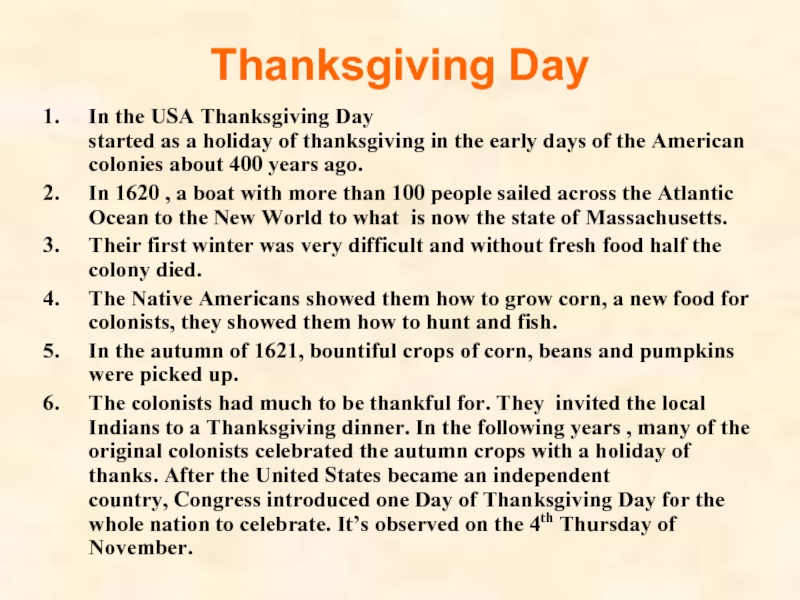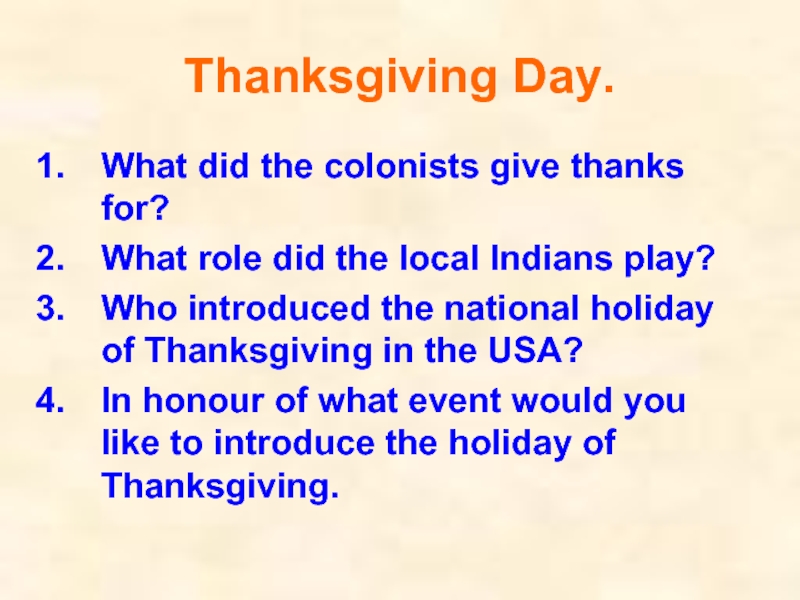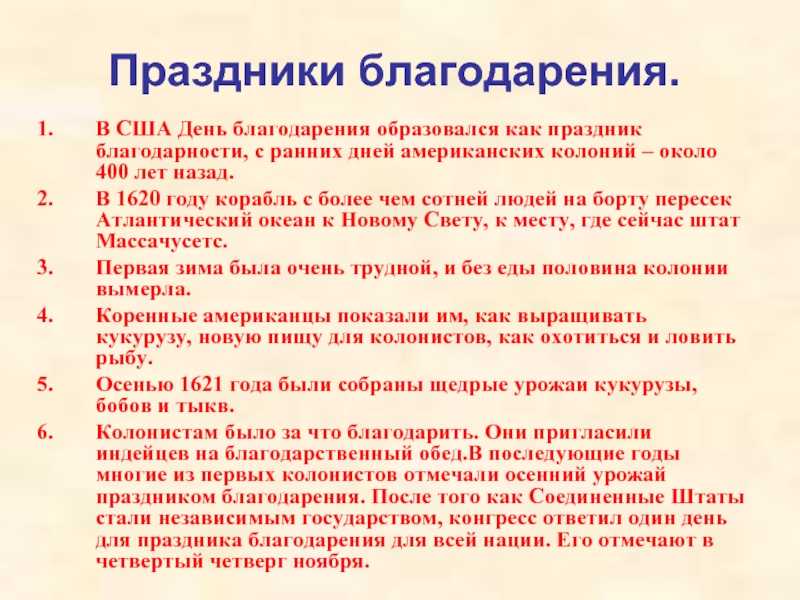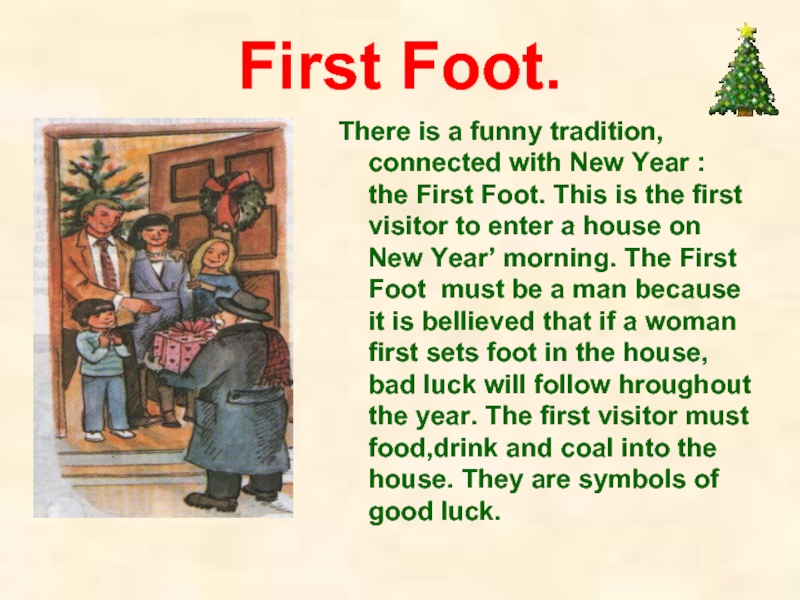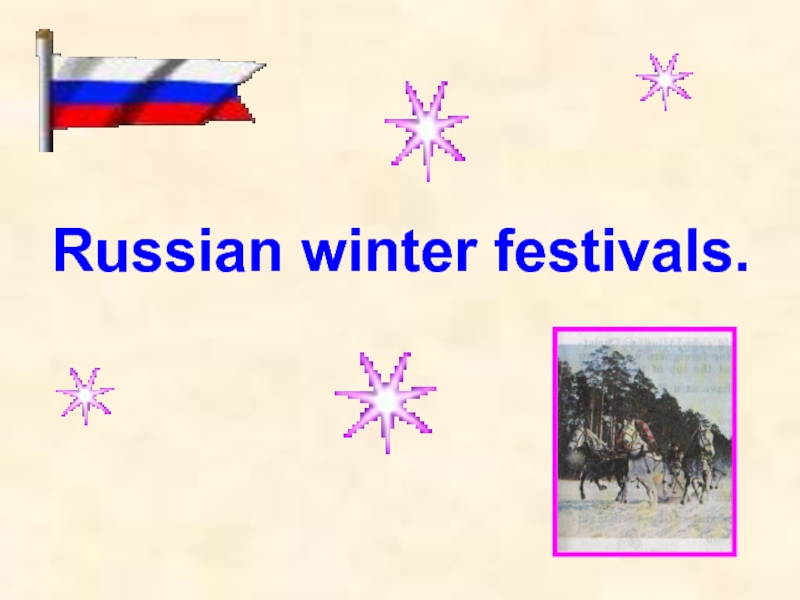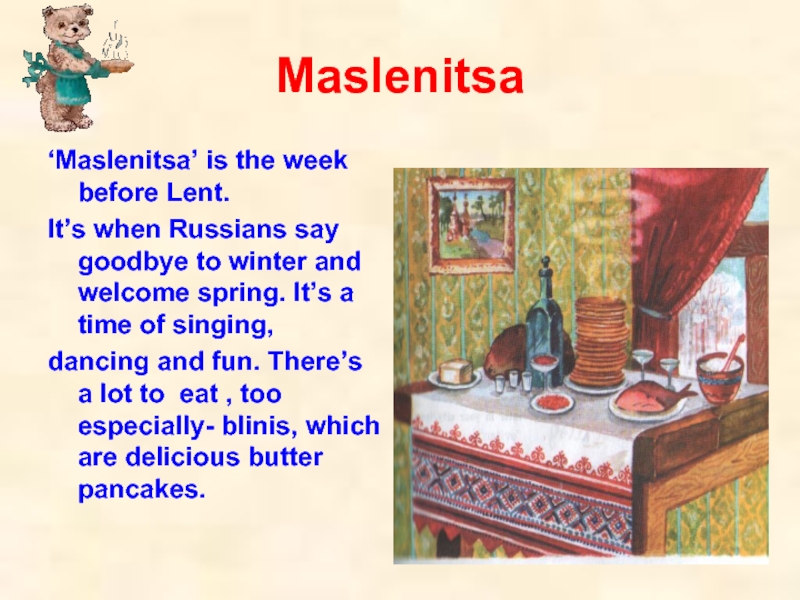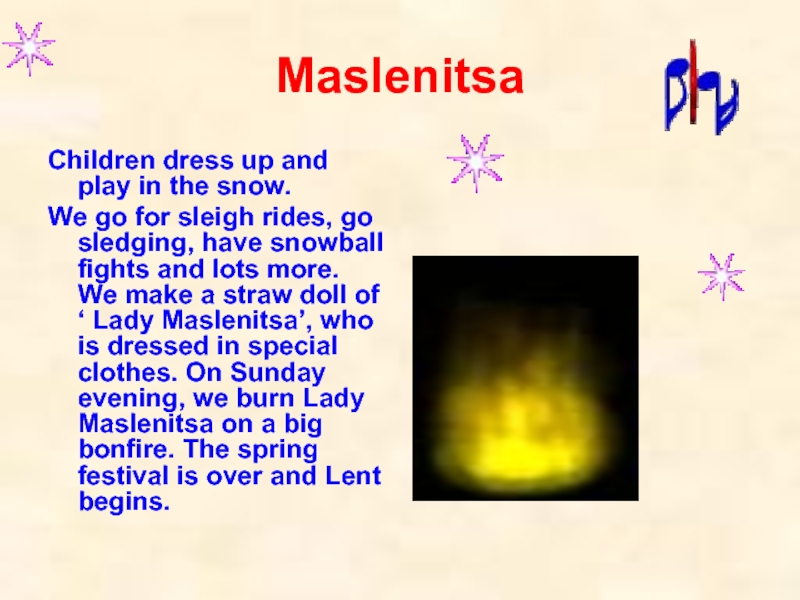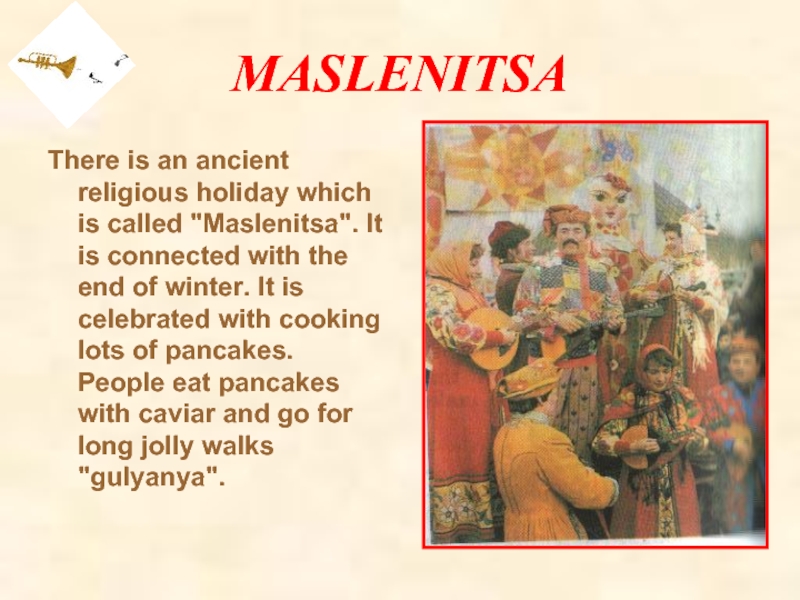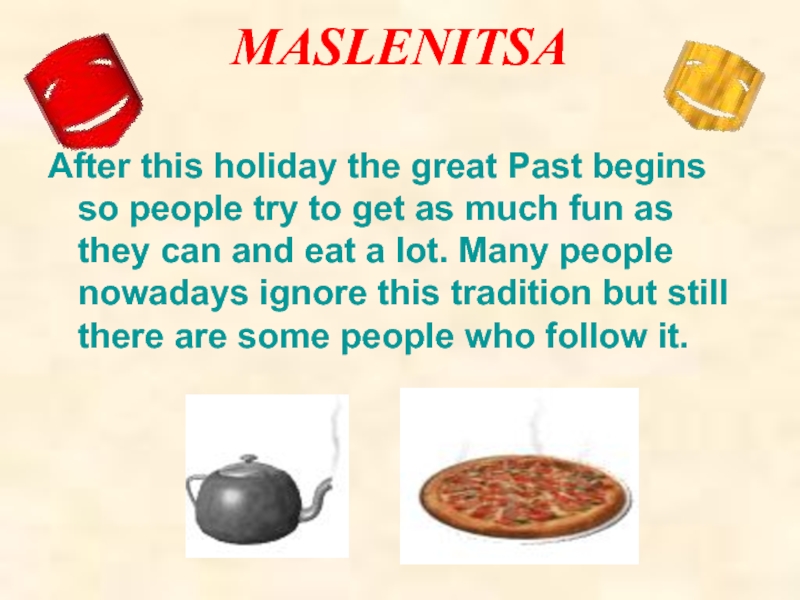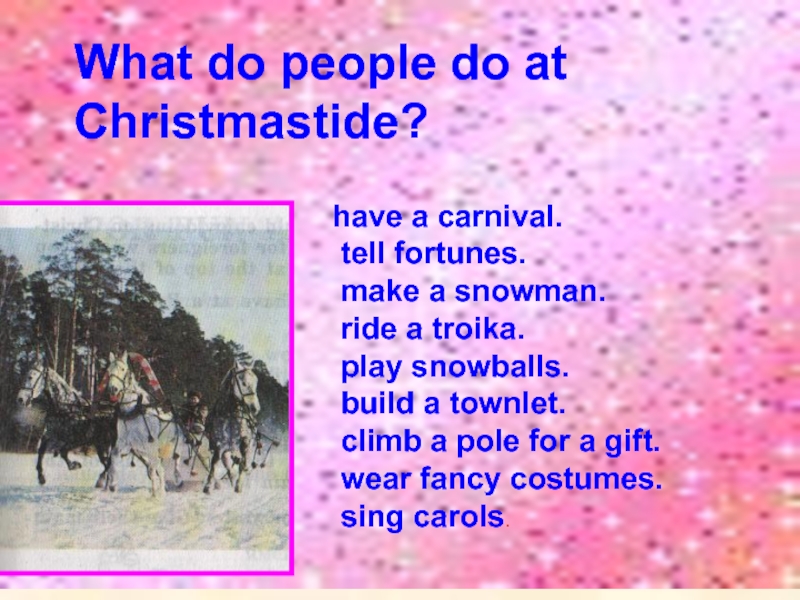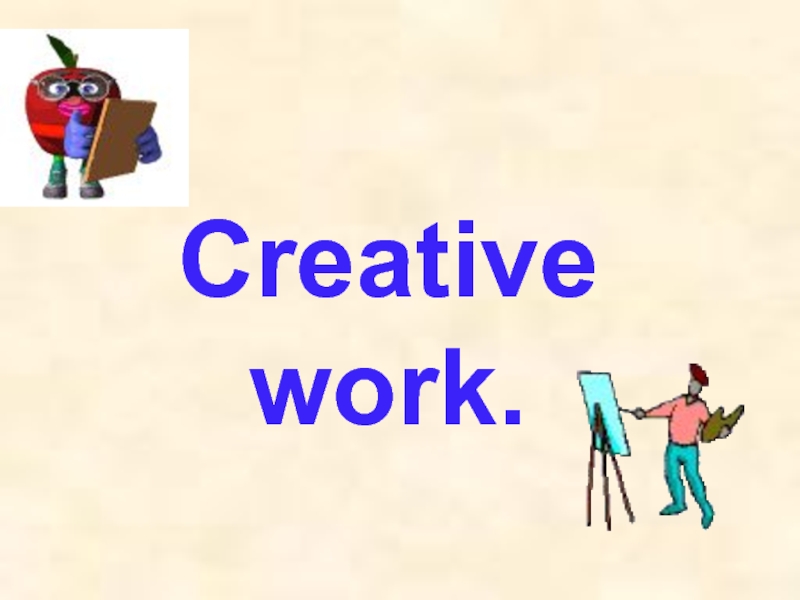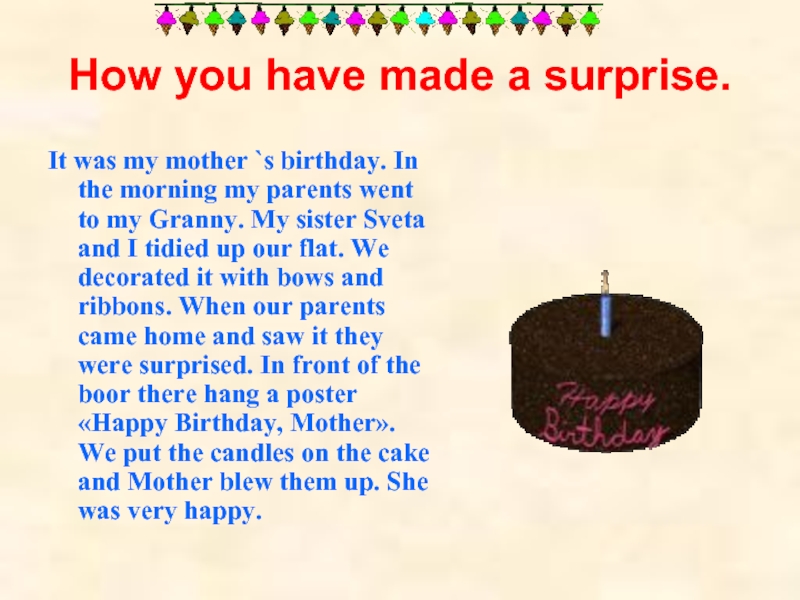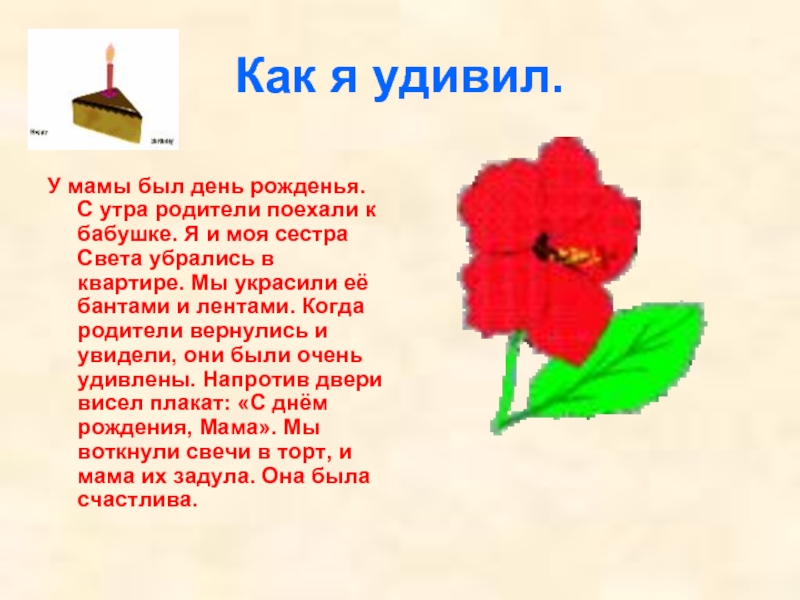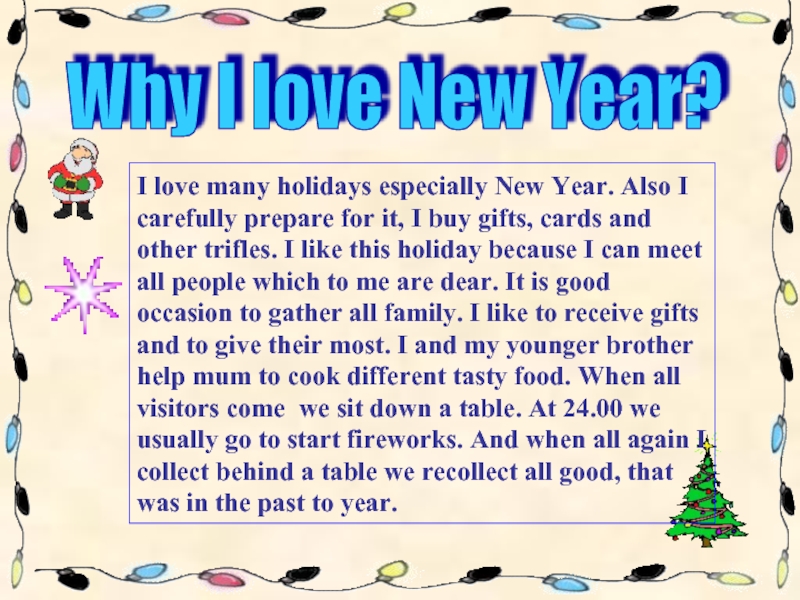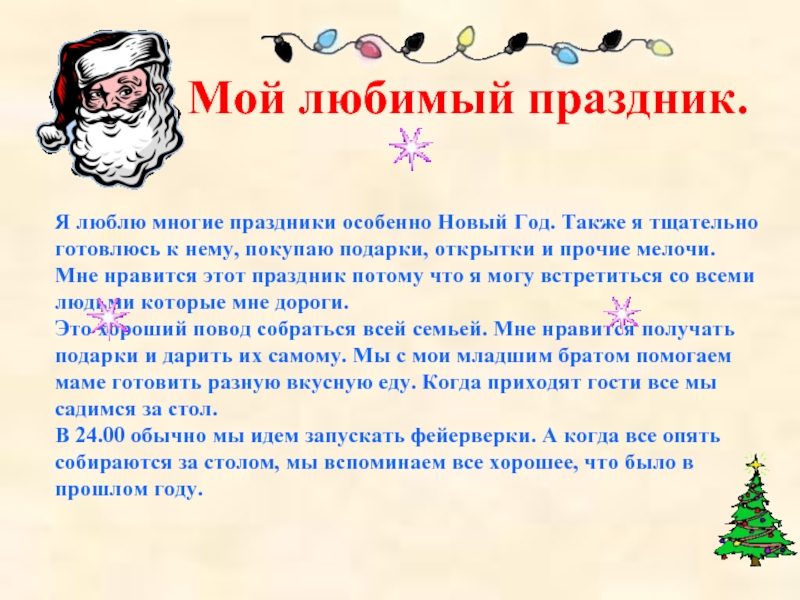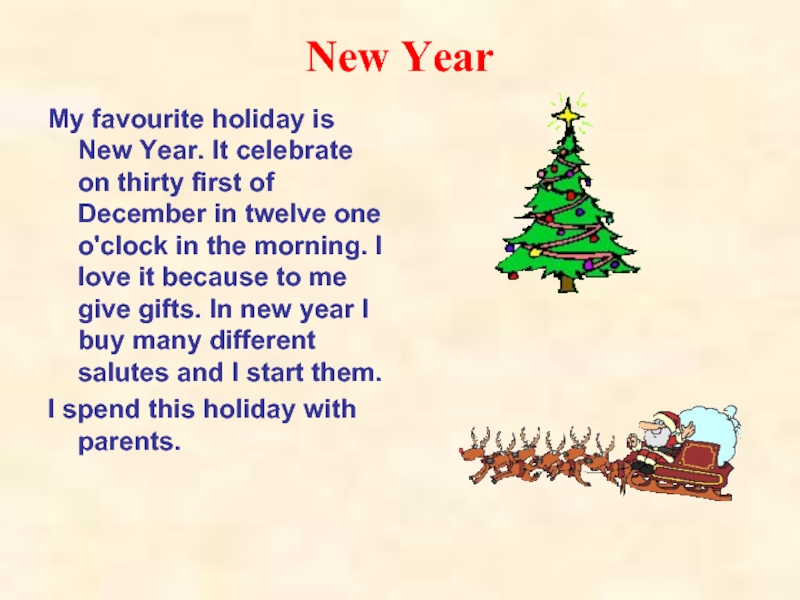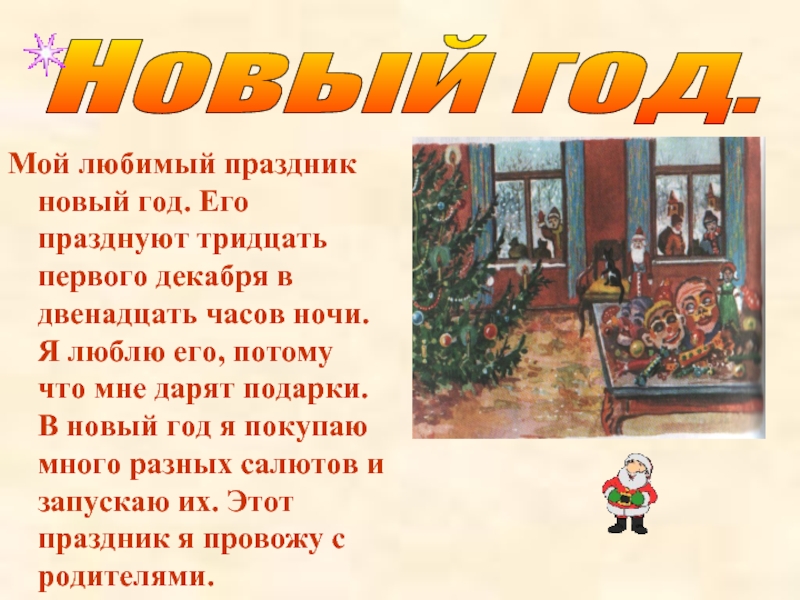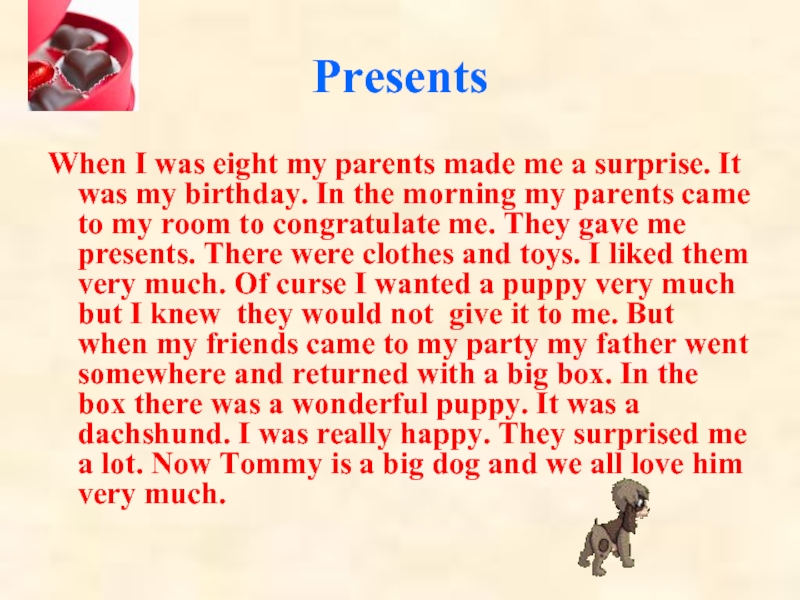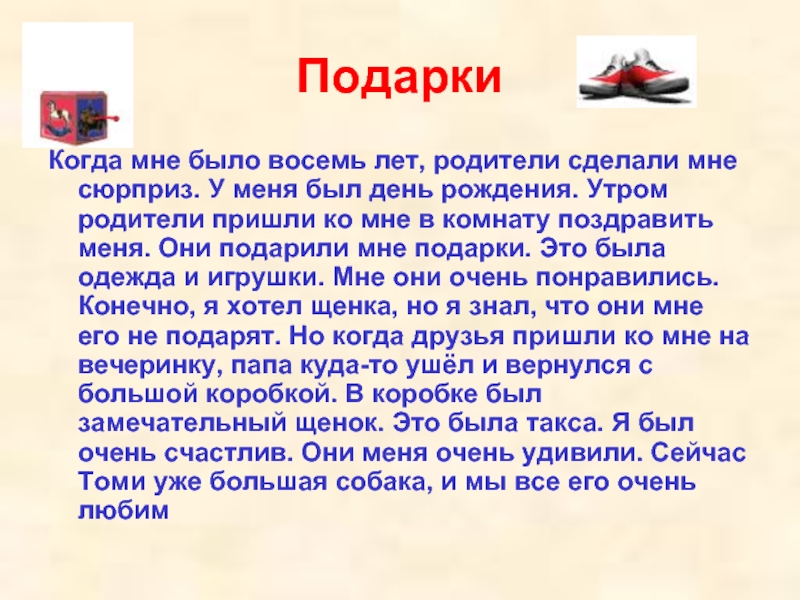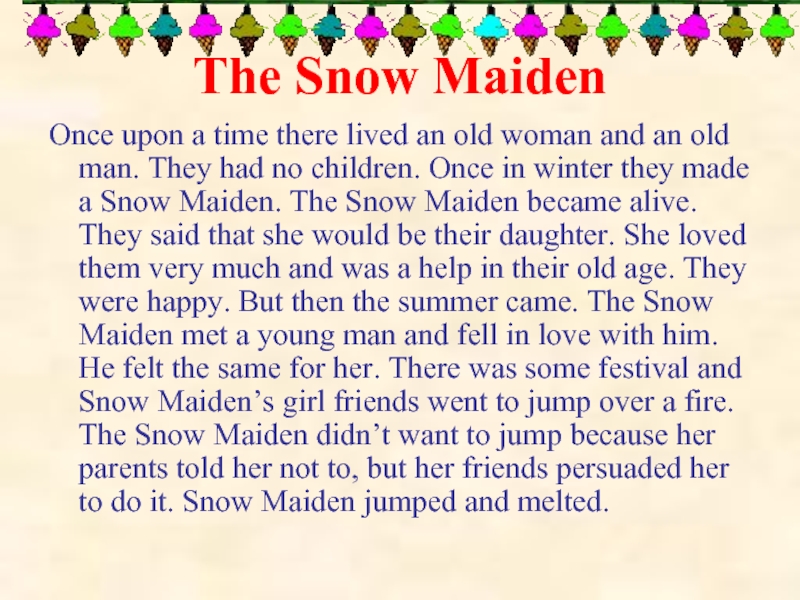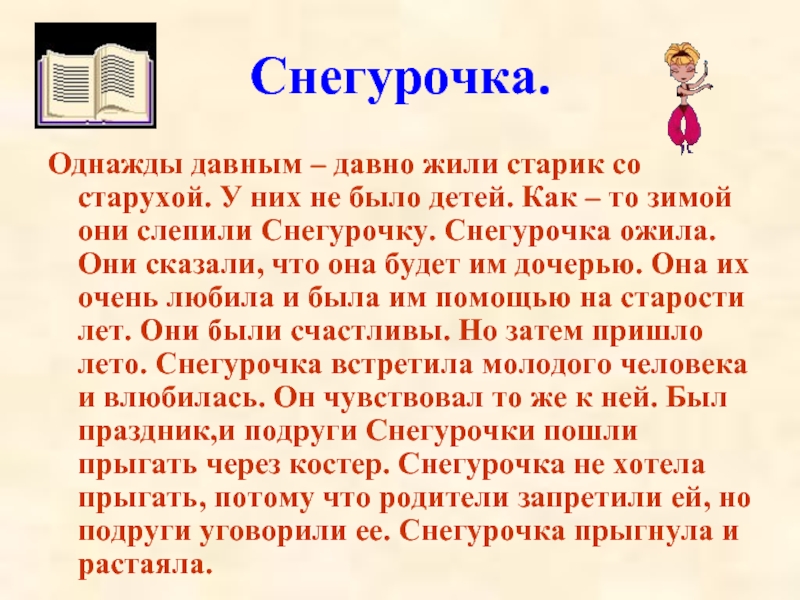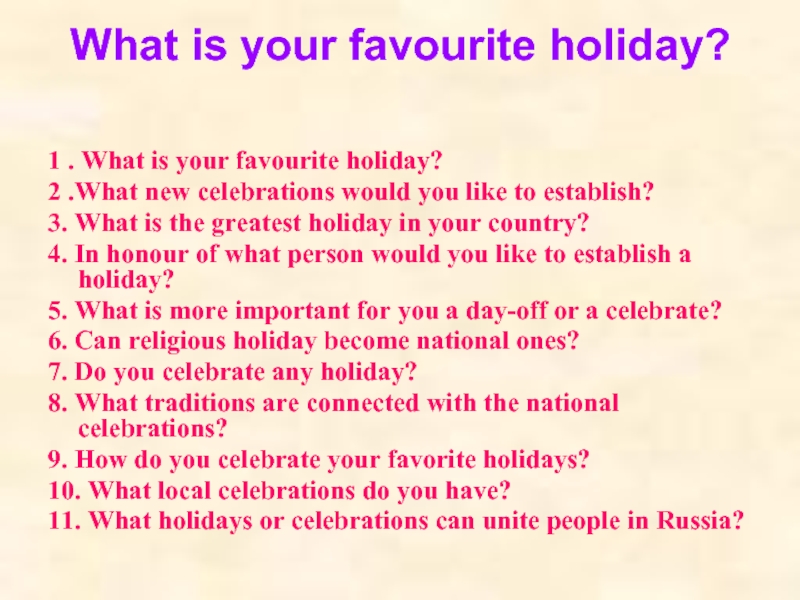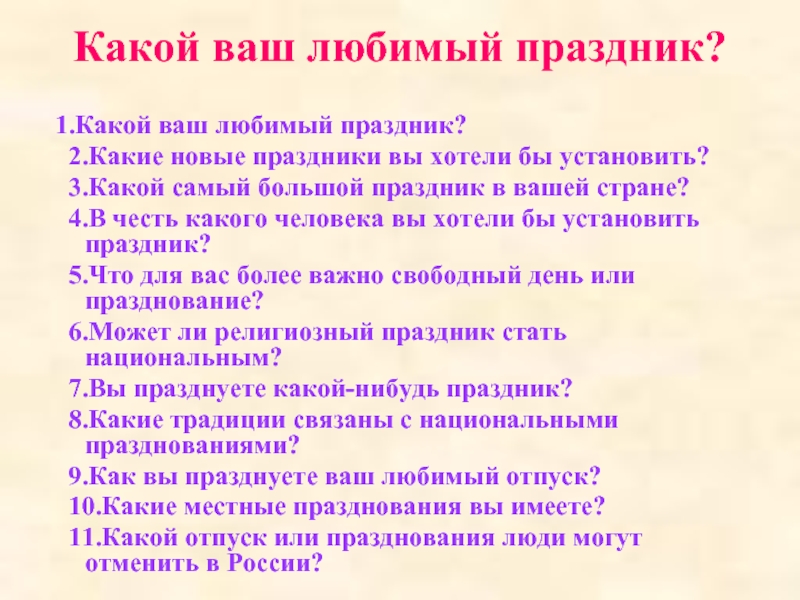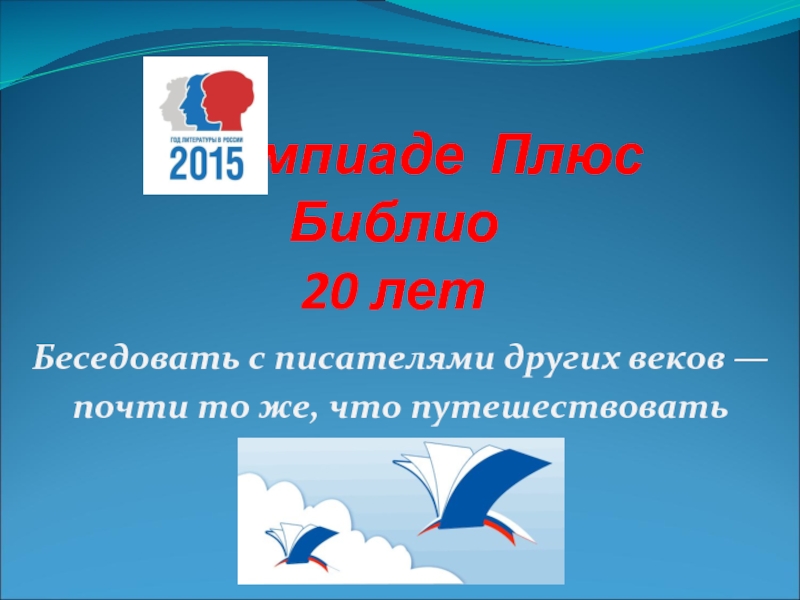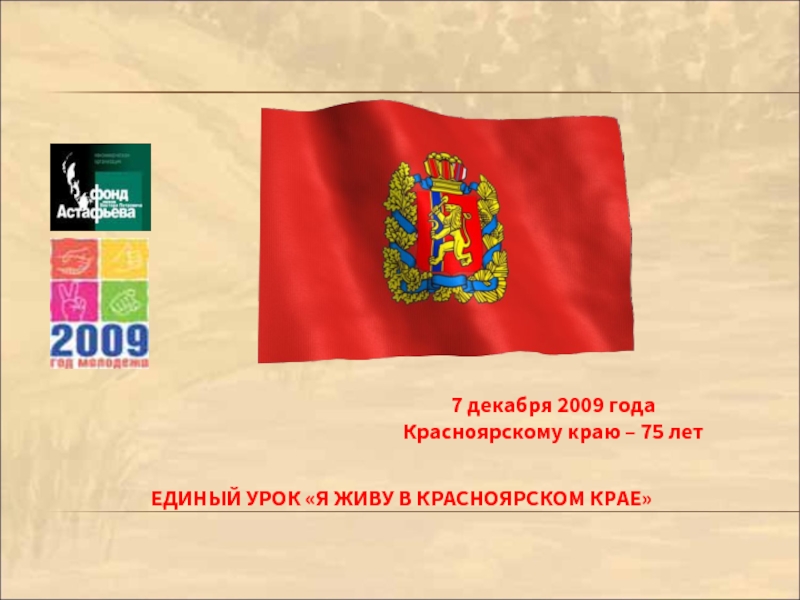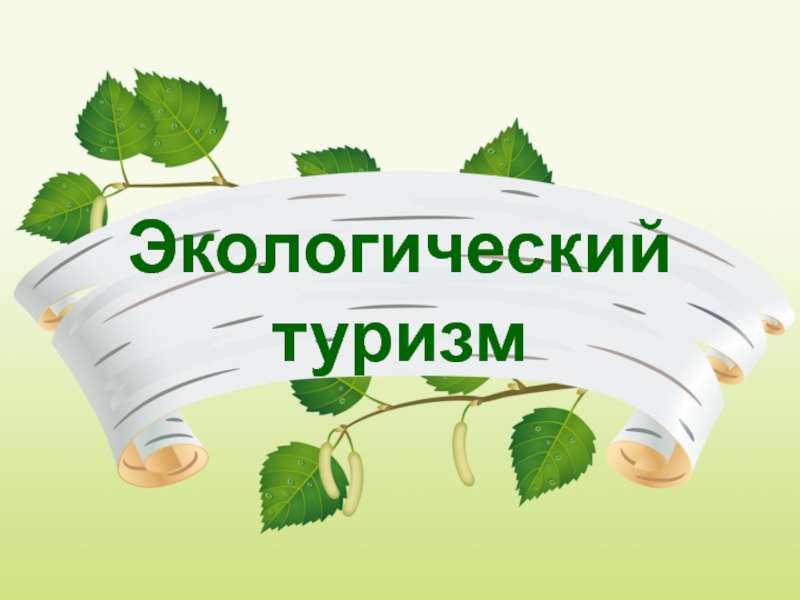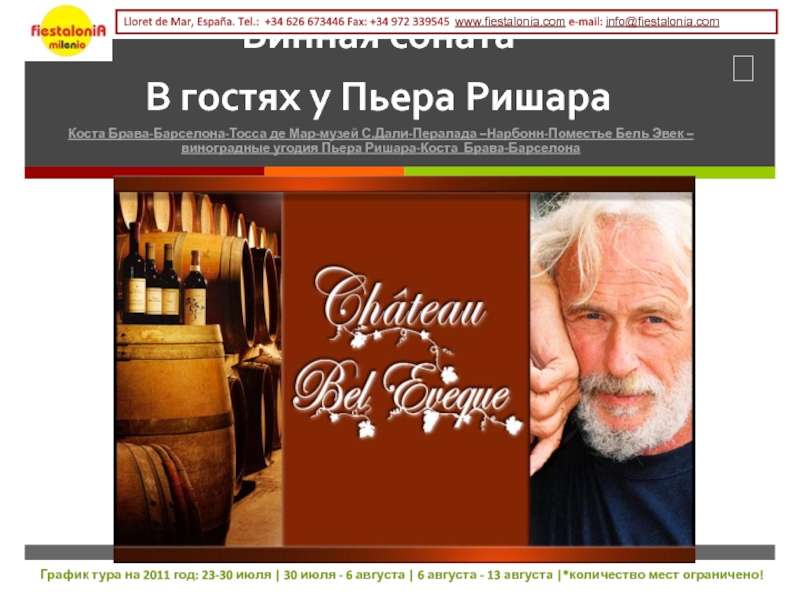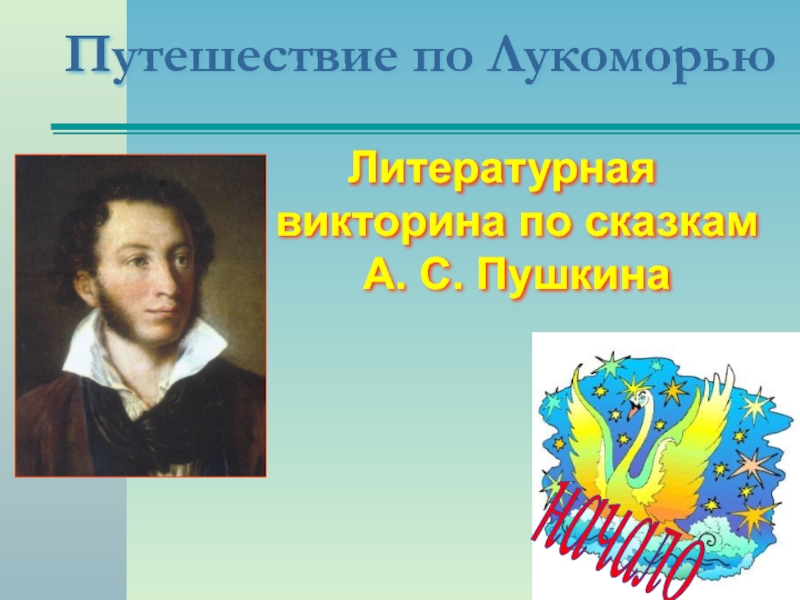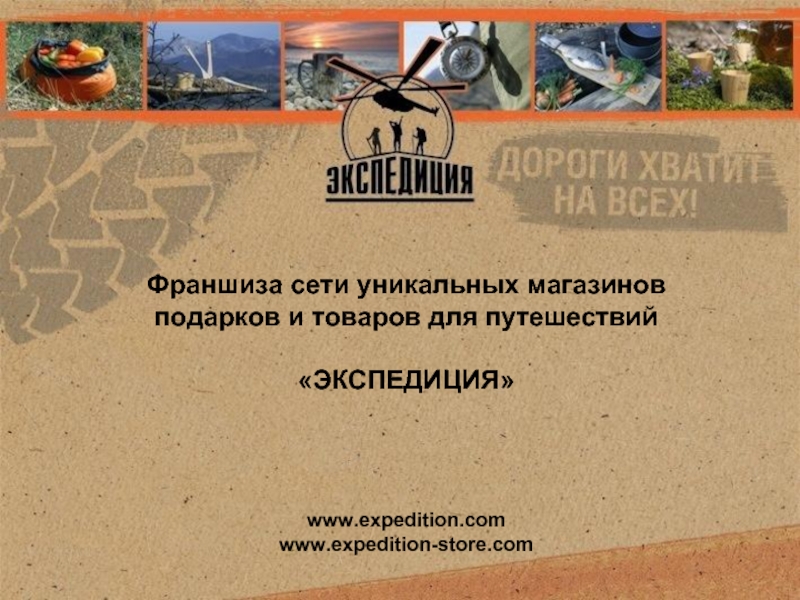- Главная
- Разное
- Дизайн
- Бизнес и предпринимательство
- Аналитика
- Образование
- Развлечения
- Красота и здоровье
- Финансы
- Государство
- Путешествия
- Спорт
- Недвижимость
- Армия
- Графика
- Культурология
- Еда и кулинария
- Лингвистика
- Английский язык
- Астрономия
- Алгебра
- Биология
- География
- Детские презентации
- Информатика
- История
- Литература
- Маркетинг
- Математика
- Медицина
- Менеджмент
- Музыка
- МХК
- Немецкий язык
- ОБЖ
- Обществознание
- Окружающий мир
- Педагогика
- Русский язык
- Технология
- Физика
- Философия
- Химия
- Шаблоны, картинки для презентаций
- Экология
- Экономика
- Юриспруденция
Элективный курс по английскому языку презентация
Содержание
- 1. Элективный курс по английскому языку
- 2. Пояснительная записка.
- 3. Особенность курса. 1.Ориентация на современный английский
- 4. Ожидаемые результаты обучения. представить сообщение по
- 5. Методы и приёмы обучения. 1.Предъявление материала:
- 6. Учебно-тематический план.
- 7. UK (The United Kingdom of Great Britain and Northern Ireland)
- 8. Ireland. Ulster is an old name.
- 9. Wales The Wales Valleys
- 10. England Еngland is magic.
- 11. Scotland
- 12. Calendar.
- 15. Invitations. Formal. Dear __Sue_, Please come to
- 16. Invitations. Informal. We are having a
- 17. Are Russian and British traditions different?
- 18. British holidays, traditions and customes.
- 19. New Year There are a number of
- 20. New Year’s Eve all British celebrate on
- 21. In Scotland and the North of England
- 22. St.Valentine’s Day. St.Valentine’s Day has roots
- 23. День святого Валентина. Истоки Дня святого Валентина
- 24. St. Valentine's Day The next holiday of
- 25. Mother's Day In May there is Mother's
- 26. Easter In April there is Easter. At
- 27. Father's Day. In June there is Father's
- 29. Put the sentences in the order to
- 30. Хэллоуин На Хэллоуин дети делают свечи-фонари, помещенные
- 31. For Christmas, a Christian holiday held on
- 32. Christmas Day. The 25th of December
- 33. Рождество. Рождество -христианский церковный праздник, который празднуют
- 34. Chinese New Year.
- 35. The Chinese New Year is celebrated
- 36. Китайский новый год Китайский новый год отмечают
- 37. Telegram from the
- 38. Stonehenge.
- 39. Stonehenge.
- 42. A Ballad of Stonehenge .
- 43. Christ [kraist] — Иисус Христос wild [waild]
- 44. Найдите в стихотворении "A Ballad of Stonehenge"
- 45. Thanksgiving Day Thanksgiving is always on
- 46. Thanksgiving Day In the USA Thanksgiving
- 47. Thanksgiving Day. What did the colonists give
- 48. Праздники благодарения. В США День благодарения образовался
- 49. There is a funny tradition, connected with
- 50. Russian winter festivals.
- 51. Maslenitsa ‘Maslenitsa’ is the week before Lent.
- 52. Maslenitsa Children dress up and play in
- 53. MASLENITSA There is an ancient
- 54. MASLENITSA After this holiday the great
- 55. What do people do at
- 56. Creative work.
- 57. How you have made a surprise. It
- 58. Как я удивил. У мамы был
- 59. Why I love New Year? I
- 60. Я люблю многие праздники особенно Новый Год.
- 61. New Year My favourite holiday is New
- 62. Новый год. Мой любимый праздник новый
- 63. Presents When I was eight my parents
- 64. Подарки Когда мне было восемь лет, родители
- 65. The Snow Maiden Once upon a time
- 66. Снегурочка. Однажды давным – давно жили старик
- 67. What is your favourite holiday? 1
- 68. Какой ваш любимый праздник? 1.Какой ваш
Слайд 2 Пояснительная записка.
Цель данного курса : расширить общий и страноведческий кругозор учащихся, углубить знания о культуре и истории Великобритании, воспитание культуры речи, интерес и уважение к культуре, истории, традициям страны изучаемого языка, познакомить учащихся с богатством и достопримечательностями Объединённого Королевства : Англией, Шотландией, Уэльсом и Ирландией. Актуальность содержания мотивирует учащихся к изучению английского языка, способствует развитию учебных, коммуникативных навыков.
Курс учит читать, понимать, анализировать и использовать газетные и журнальные публикации, одновременно развивает речевые умения и навыки в устной и письменной речи.
Элективный курс« Путешествие по Британии.»
способствует более углублённому формированию у школьников представлений о социокультурном портрете Британии, о национальном характере культуры . Он формирует у школьников уважение к другой культуре, расширяет кругозор.
Проектные задания имеют тематику: « Англия-страна красных роз», « Символы Шотландии», «Праздники и традиции».
Слайд 3Особенность курса.
1.Ориентация на современный английский литературный язык, с привлечением страноведческого текстового
2.Применение тестовых методик.
Слайд 4Ожидаемые результаты обучения.
представить сообщение по заданной
тематике (15 фраз)
или
«Шотландия», «Англия», «Уэльс», «Ирландия».
Слайд 5Методы и приёмы обучения.
1.Предъявление материала:
-объяснение;
-слушание
2.Тренировка: - словарная работа;
- чтение материала.
Слайд 8Ireland.
Ulster is an old name.
Ulster is the old name of
Ulster has its own symbol and flag.
Олстер это старое название.
Олстер это старое название северной Ирландии.
Олстер имеет свой собственный символ и флаг.
Слайд 9Wales
The Wales Valleys are wonderful.
There are
I come to the Wales Valleys and enjoy them.
Слайд 10England
Еngland is magic.
Magic England has beautiful
England is a country of red roses.
Англия - волшебная.
Волшебная Англия - имеет прекрасные пейзажи.
Англия - страна красных роз.
Слайд 11 Scotland
There are many old castles
Scotland is famous for bagpipers.
In Scotland some men wear kilts.
A thistle is the symbol of
Scotland.
Слайд 15Invitations. Formal.
Dear __Sue_,
Please come to my party.
At ___9, Brookside__
Date __8th
Time __8 o’clock__
From ___Jane__
Dear ________
Thanks for the invitation.
I would love to come.
I am unable to come.
From _______
Слайд 16Invitations. Informal.
We are having a party
On Saturday at 8 o’clock.
a friend.
Yours, George.
Слайд 19New Year
There are a number of holidays, which are celebrated in
One of them is, of course, New Year's Day on the first of January. It is not so popular in England as in our country, but it is rather popular in Scotland. On that day people usually visit their friends and there is a lot of dancing and eating. In Scotland people bring a piece of coal for good luck in the New Year.
Слайд 20New Year’s Eve all British celebrate on the 31st of December.
Слайд 21In Scotland and the North of England there is an interesting
The First Foot
Слайд 22St.Valentine’s Day.
St.Valentine’s Day has roots in several legends. Cupid, the
Слайд 23День святого Валентина.
Истоки Дня святого Валентина лежат в нескольких легендах.
Купидон, римский
Валентин был по христиански священником.
Он жил в Римской империи через триста лет после смерти Иисуса Христа.
Сейчас День святого Валентина – день всех влюбленных.
Многие посылают « валентинки» , сентиментальные и прочувствованные поздравительные открытки .
Слайд 24St. Valentine's Day
The next holiday of the year is St. Valentine's
Слайд 25Mother's Day
In May there is Mother's Day. All the children, little
Слайд 26Easter
In April there is Easter. At Easter children eat chocolate Easter
Слайд 27Father's Day.
In June there is Father's Day. On Father's Day children
Слайд 28 Hallowe’en.
On the 31st of
Слайд 29Put the sentences in the order to find out how to
Put the candle inside the pumpkin.
Cut a nose and a mouth.
Cut eyes.
Take a huge yellow pumpkin.
Light the candle.
Put the pumpkin near or in the house.
Слайд 30Хэллоуин
На Хэллоуин дети делают свечи-фонари, помещенные в полых тыквах, которым сделали
Слайд 31For Christmas, a Christian holiday held on December 25th in honor
Christmas
Слайд 32Christmas Day.
The 25th of December is Christmas Day. It is one
Слайд 33Рождество.
Рождество -христианский церковный праздник, который празднуют 25 декабря в честь рождения
Слайд 35
The Chinese New Year is celebrated in early February. It is
A huge cloth dragon sways back and forth around the street corners chasing a red sunball or a white pearl- ball. Following the dragon people are dancing and playing drums and gongs.
Chinese New Year
Слайд 36Китайский новый год
Китайский новый год отмечают в начале февраля. В это
в гонги
Слайд 37 Telegram from the Queen.
Each British person gets
Слайд 40
Midsummer’s Day, June 24th is longest day of the years. On that day a very old custom at Stonehenge in Wiltshire, England, is observed. Stonehenge is one of the Europe’s biggest stone circles that is 10 or 12 meters high. The earliest part of Stonehenge is approximately 5,000 years old. But what was Stonehenge? A holy place? A market? Or kind of calendar? Actually the Druids priests in Britain used Stonehenge for a calendar.
Слайд 41
They introduced it about 2,000 years ago. The sun stones at Stonehenge let the Druids know when the months and seasons start. On the morning of June 24th the sun shines on one famous stone - the Hell Stone, this is the most important moment of the years for the Druids. There are Druids in Britain today, too, and every June a lot of them attend Stonehenge. It is a strange, ancient, rare but still living custom.
Слайд 42A Ballad of Stonehenge
. Three thousand years before Christ was
There were people, forests and rivers there,
And the magic stones hung in the air.
The people who brought them were strong and brave
And under these stones they found their graves. Where did they come from? Where did they go? Who were these people? We'll never know.
Was it a temple? An ancient god's house?
Was it a compass for friends from the stars? They built it five thousand years ago,
But why did they do it? We'll never know.
Now these days are gone and the people are gone, But the midsummer sunrise still shines on the stone And the midwinter sunset still comes with the rain, And Stonehenge greets them on Salisbury Plain.
Слайд 43Christ [kraist] — Иисус Христос
wild [waild] — дикий
forest ['forist] — лес
hang
ancient ['einjant] — древний
midsummer sunrise — восход солнца
в день летнего солнцестояния midwinter sunset — заход солнца
в день зимнего солнцестояния to greet — приветствовать
Слайд 44Найдите в стихотворении "A Ballad of Stonehenge" строки, рассказывающие о следующем:
Стоунхендж
Предназначение Стоунхенджа неизвестно.
Вокруг Стоунхенджа есть древние захоронения.
Стоунхендж построили сильные и смелые люди.
Англия была населена уже пять тысяч лет назад.
Стоунхендж был построен инопланетянами как опознавательный знак.
Стоунхендж расположен на Солсберийской равнине.
Стоунхендж-был построен с учетом положения солнца в дни летнего и зимнего солнцестояния.
Никто не знает, кто построил Стоунхендж.
10. Возможно, Стоунхендж был храмом древних богов.
Слайд 45Thanksgiving Day
Thanksgiving is always on the 4th Thursday of November.
People work
Then she roasts it. It’s important not to burn the bird. We celebrate Thanks-giving in the family circle. First, we have a church service. Then we have a traditional Thanksgiving dinner:
A roast turkey, potatoes, and popcorn. For dessert we prefer a pumpkin pie with vanilla ice cream.
Слайд 46Thanksgiving Day
In the USA Thanksgiving Day
started as a holiday of
In 1620 , a boat with more than 100 people sailed across the Atlantic Ocean to the New World to what is now the state of Massachusetts.
Their first winter was very difficult and without fresh food half the colony died.
The Native Americans showed them how to grow corn, a new food for colonists, they showed them how to hunt and fish.
In the autumn of 1621, bountiful crops of corn, beans and pumpkins were picked up.
The colonists had much to be thankful for. They invited the local Indians to a Thanksgiving dinner. In the following years , many of the original colonists celebrated the autumn crops with a holiday of thanks. After the United States became an independent country, Congress introduced one Day of Thanksgiving Day for the whole nation to celebrate. It’s observed on the 4th Thursday of November.
Слайд 47Thanksgiving Day.
What did the colonists give thanks for?
What role did the
Who introduced the national holiday of Thanksgiving in the USA?
In honour of what event would you like to introduce the holiday of Thanksgiving.
Слайд 48Праздники благодарения.
В США День благодарения образовался как праздник благодарности, с ранних
В 1620 году корабль с более чем сотней людей на борту пересек Атлантический океан к Новому Свету, к месту, где сейчас штат Массачусетс.
Первая зима была очень трудной, и без еды половина колонии вымерла.
Коренные американцы показали им, как выращивать кукурузу, новую пищу для колонистов, как охотиться и ловить рыбу.
Осенью 1621 года были собраны щедрые урожаи кукурузы, бобов и тыкв.
Колонистам было за что благодарить. Они пригласили индейцев на благодарственный обед.В последующие годы многие из первых колонистов отмечали осенний урожай праздником благодарения. После того как Соединенные Штаты стали независимым государством, конгресс ответил один день для праздника благодарения для всей нации. Его отмечают в четвертый четверг ноября.
Слайд 49There is a funny tradition, connected with New Year : the
First Foot.
Слайд 51Maslenitsa
‘Maslenitsa’ is the week before Lent.
It’s when Russians say goodbye to
dancing and fun. There’s a lot to eat , too especially- blinis, which are delicious butter pancakes.
Слайд 52Maslenitsa
Children dress up and play in the snow.
We go for
Слайд 53
MASLENITSA
There is an ancient religious holiday which is called "Maslenitsa". It
Слайд 54MASLENITSA
After this holiday the great Past begins so people try to
Слайд 55
What do people do at Christmastide?
have a carnival.
tell fortunes.
make
ride a troika.
play snowballs.
build a townlet.
climb a pole for a gift.
wear fancy costumes.
sing carols.
Слайд 57How you have made a surprise.
It was my mother `s birthday.
Слайд 58Как я удивил.
У мамы был день рожденья. С утра родители поехали
Слайд 59Why I love New Year?
I love many holidays especially New
Слайд 60Я люблю многие праздники особенно Новый Год. Также я тщательно готовлюсь
Это хороший повод собраться всей семьей. Мне нравится получать подарки и дарить их самому. Мы с мои младшим братом помогаем маме готовить разную вкусную еду. Когда приходят гости все мы садимся за стол.
В 24.00 обычно мы идем запускать фейерверки. А когда все опять собираются за столом, мы вспоминаем все хорошее, что было в прошлом году.
Мой любимый праздник.
Слайд 61New Year
My favourite holiday is New Year. It celebrate on thirty
I spend this holiday with parents.
Слайд 62Новый год.
Мой любимый праздник новый год. Его празднуют тридцать первого
Слайд 63Presents
When I was eight my parents made me a surprise. It
Слайд 64Подарки
Когда мне было восемь лет, родители сделали мне сюрприз. У меня
Слайд 65The Snow Maiden
Once upon a time there lived an old woman
Слайд 66Снегурочка.
Однажды давным – давно жили старик со старухой. У них не
Слайд 67What is your favourite holiday?
1 . What is your favourite holiday?
2
3. What is the greatest holiday in your country?
4. In honour of what person would you like to establish a holiday?
5. What is more important for you a day-off or a celebrate?
6. Can religious holiday become national ones?
7. Do you celebrate any holiday?
8. What traditions are connected with the national celebrations?
9. How do you celebrate your favorite holidays?
10. What local celebrations do you have?
11. What holidays or celebrations can unite people in Russia?
Слайд 68Какой ваш любимый праздник?
1.Какой ваш любимый праздник?
2.Какие новые праздники вы
3.Какой самый большой праздник в вашей стране?
4.В честь какого человека вы хотели бы установить праздник?
5.Что для вас более важно свободный день или празднование?
6.Может ли религиозный праздник стать национальным?
7.Вы празднуете какой-нибудь праздник?
8.Какие традиции связаны с национальными празднованиями?
9.Как вы празднуете ваш любимый отпуск?
10.Какие местные празднования вы имеете?
11.Какой отпуск или празднования люди могут отменить в России?

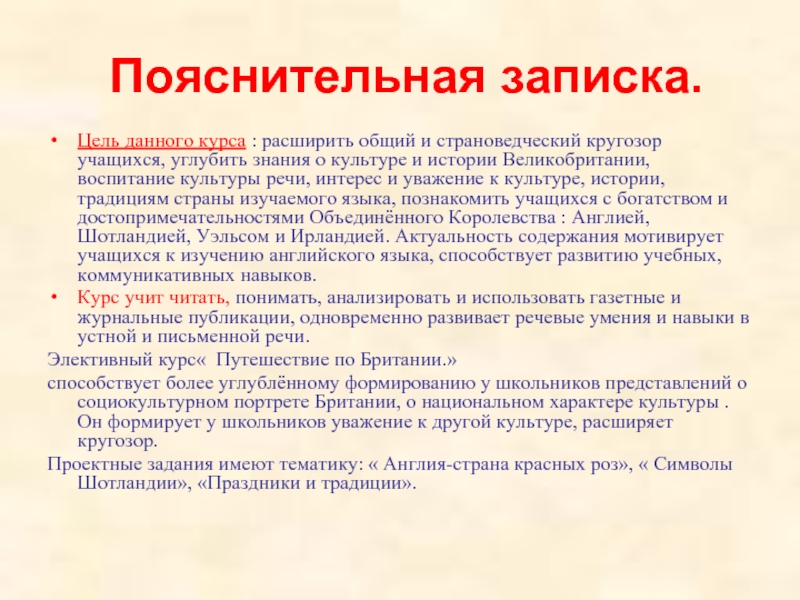
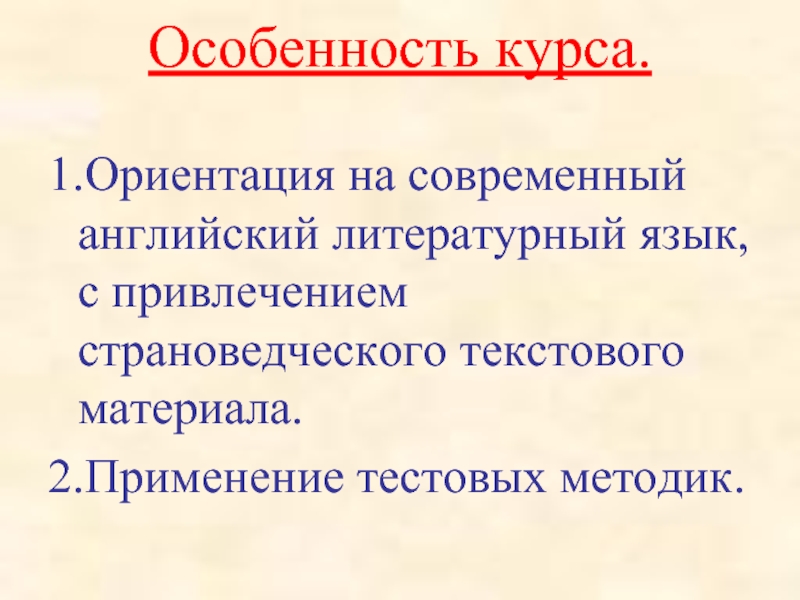
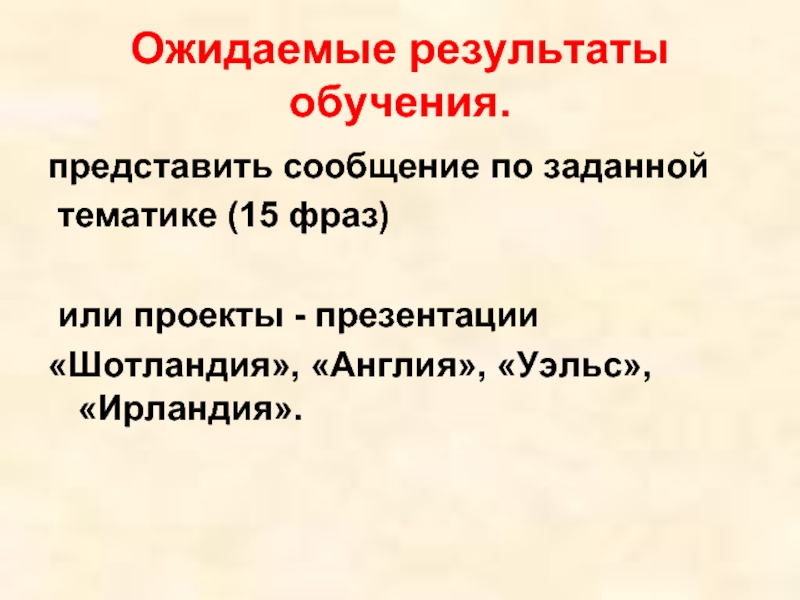
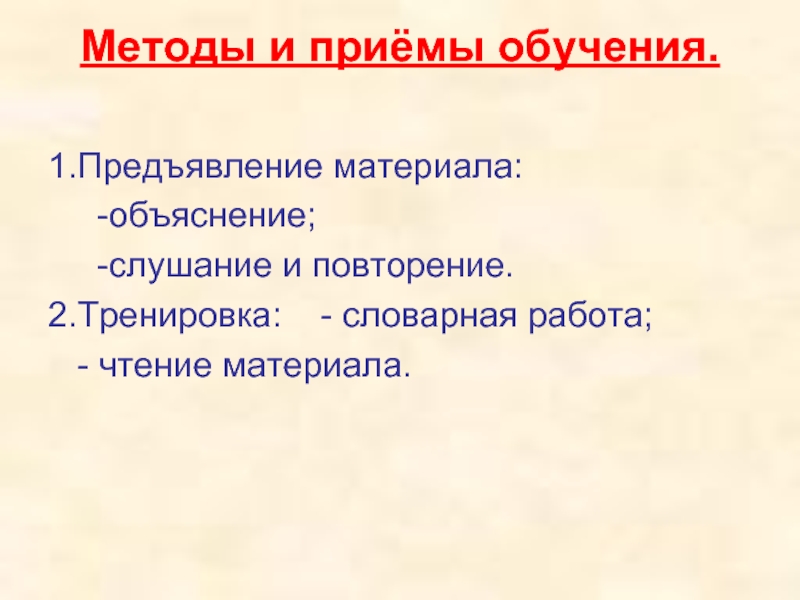
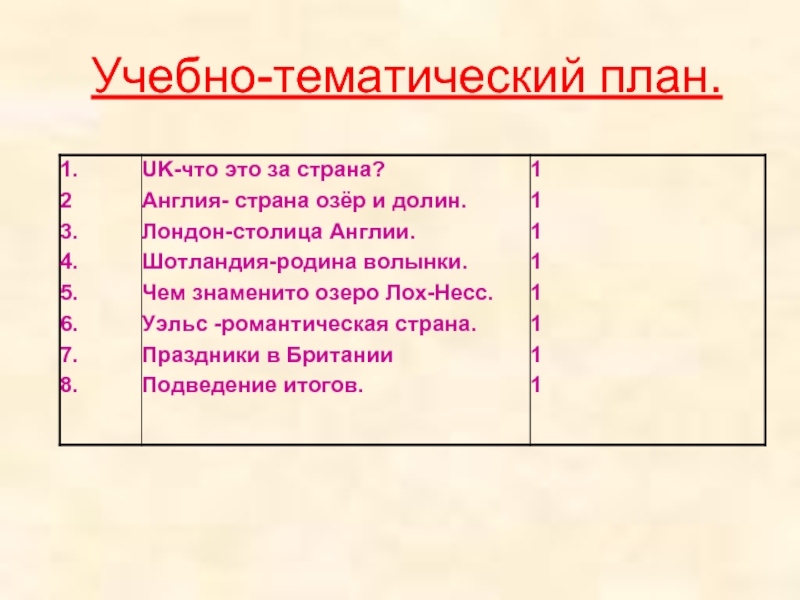
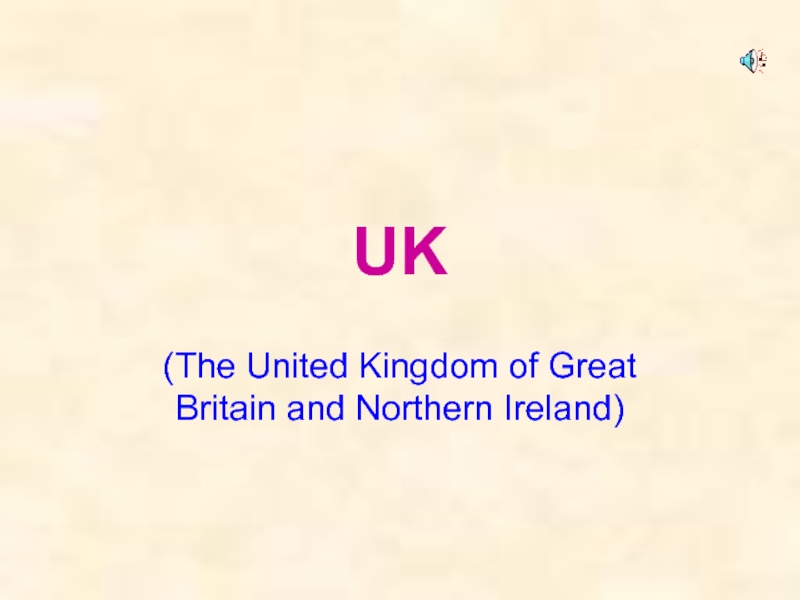
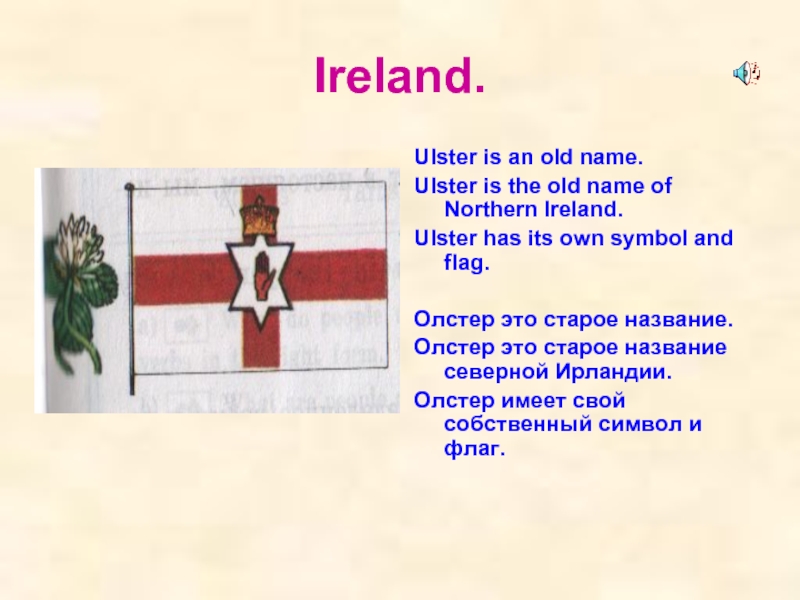
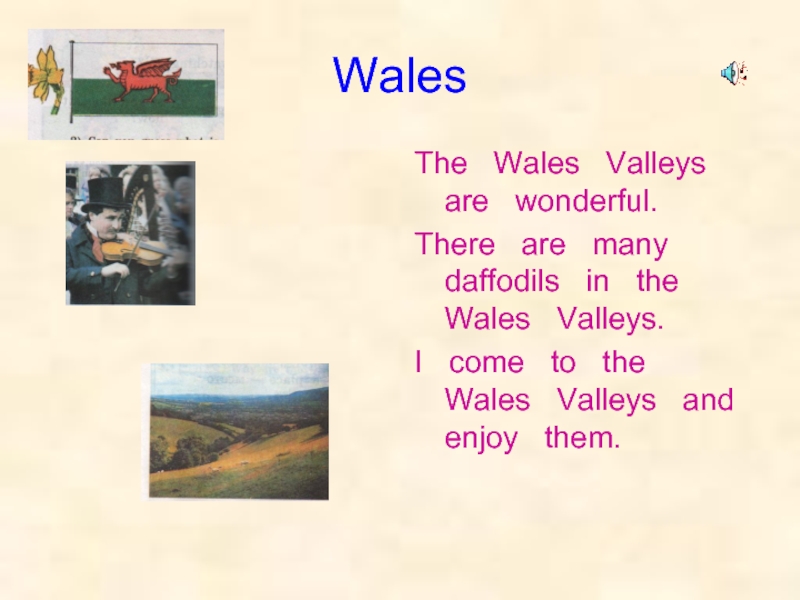
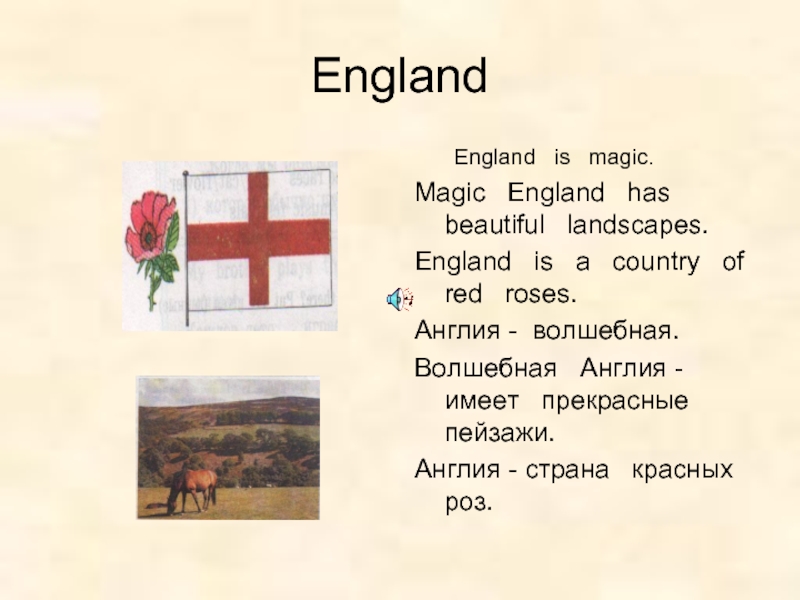
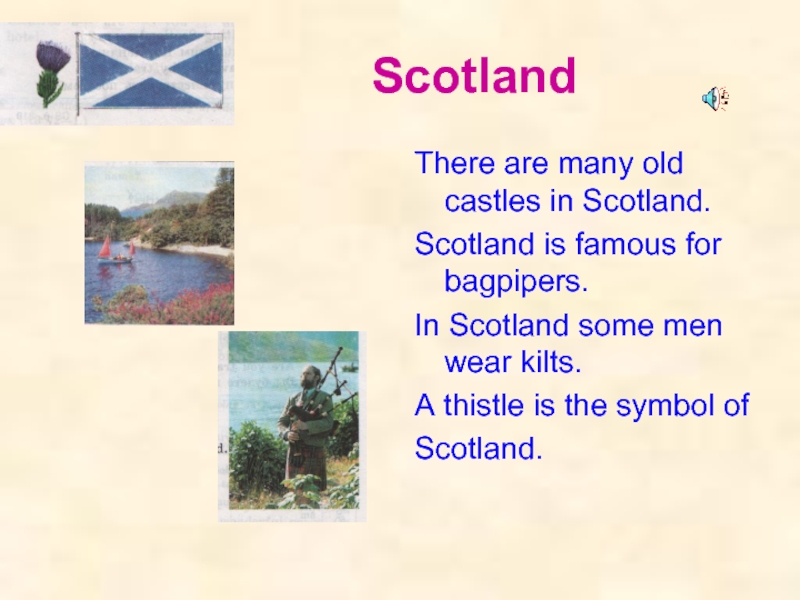
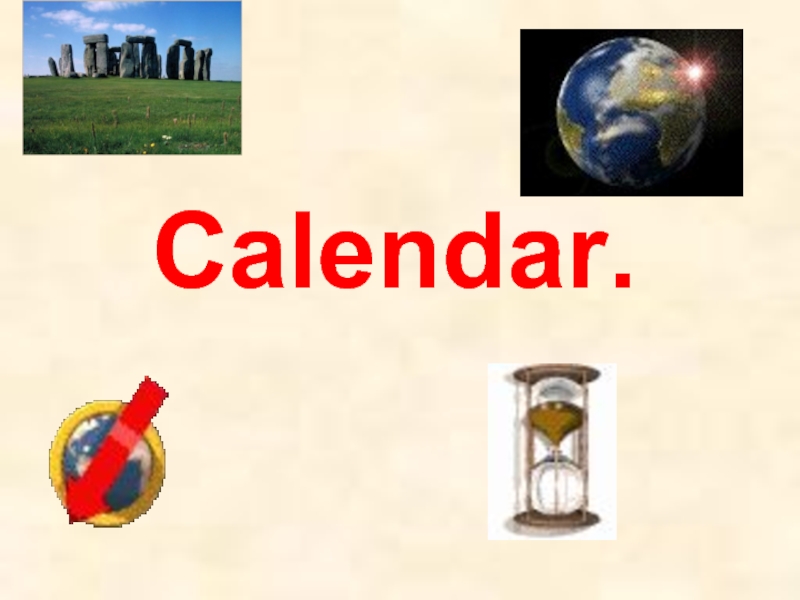
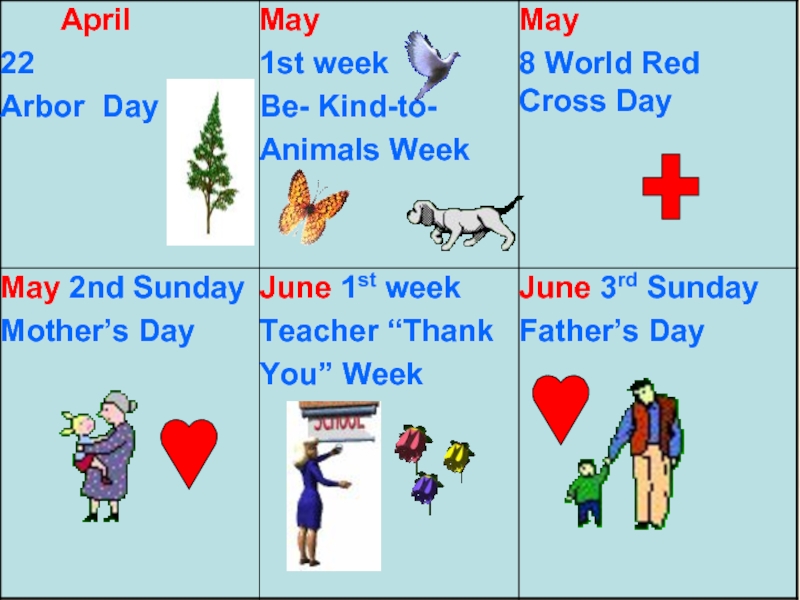
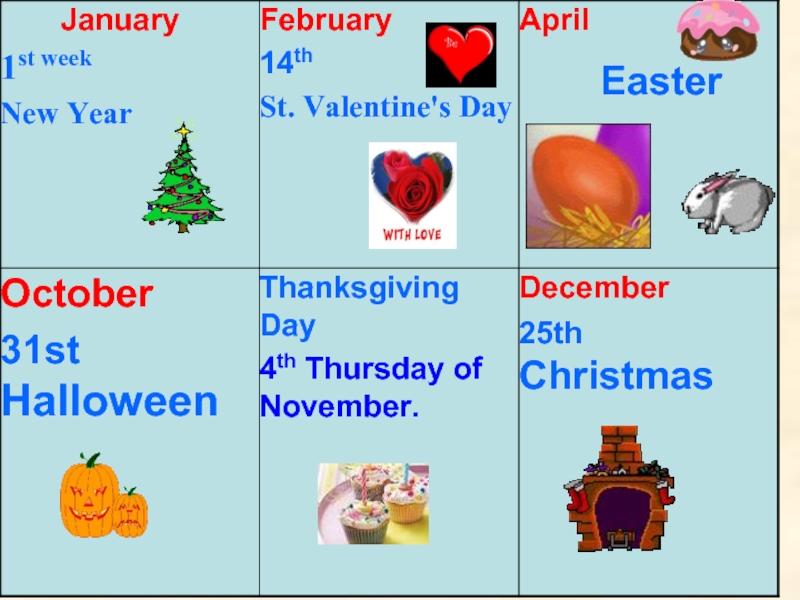
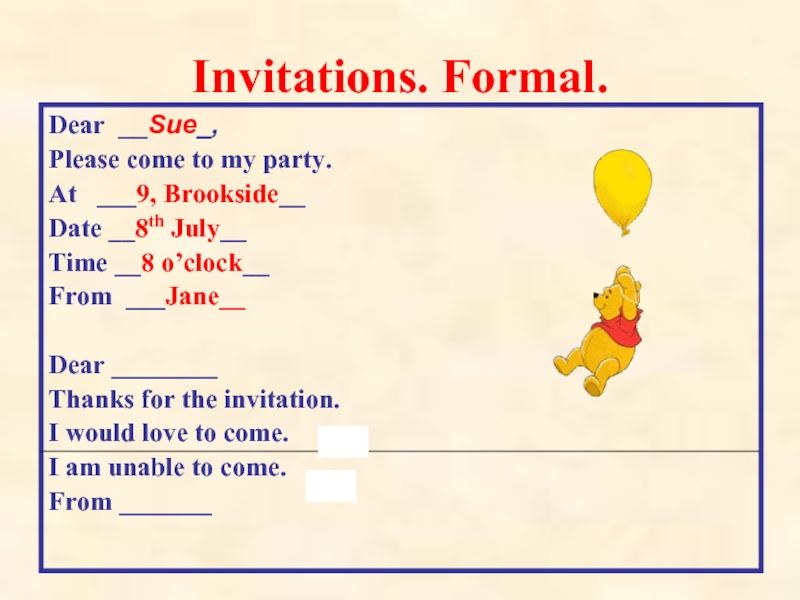
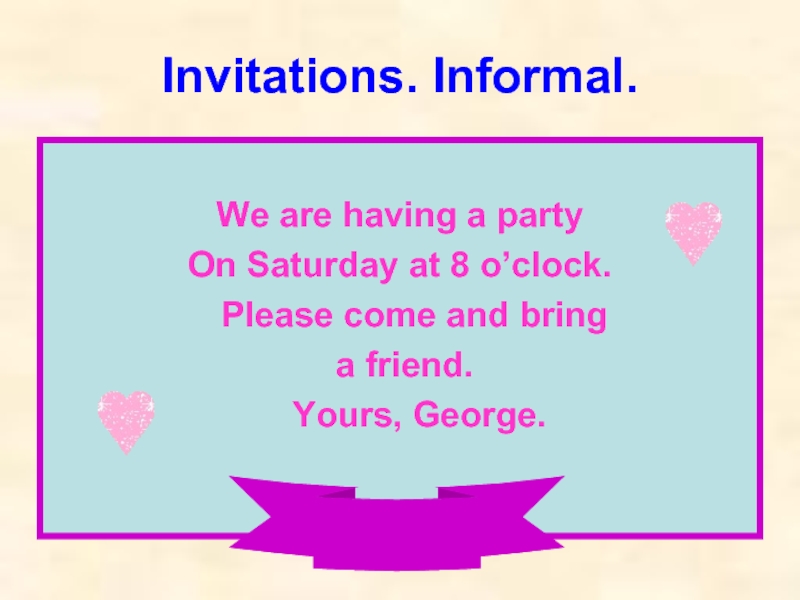
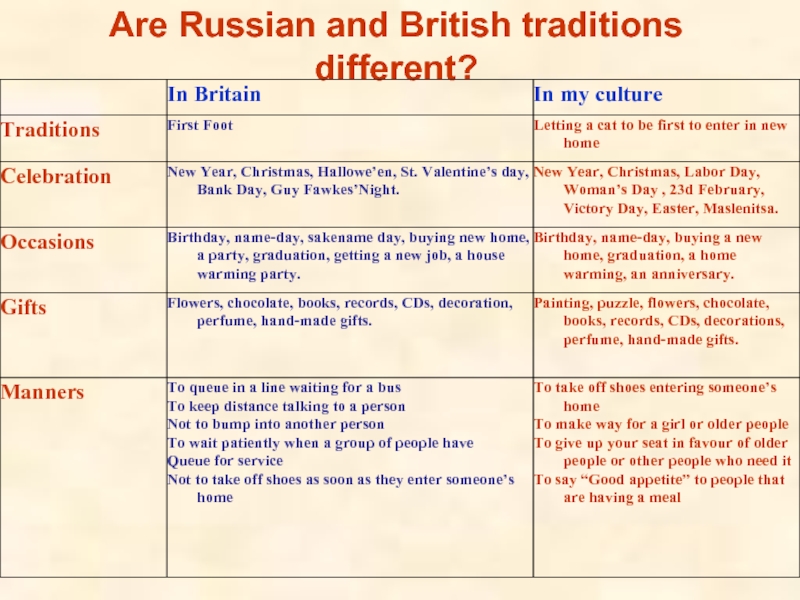
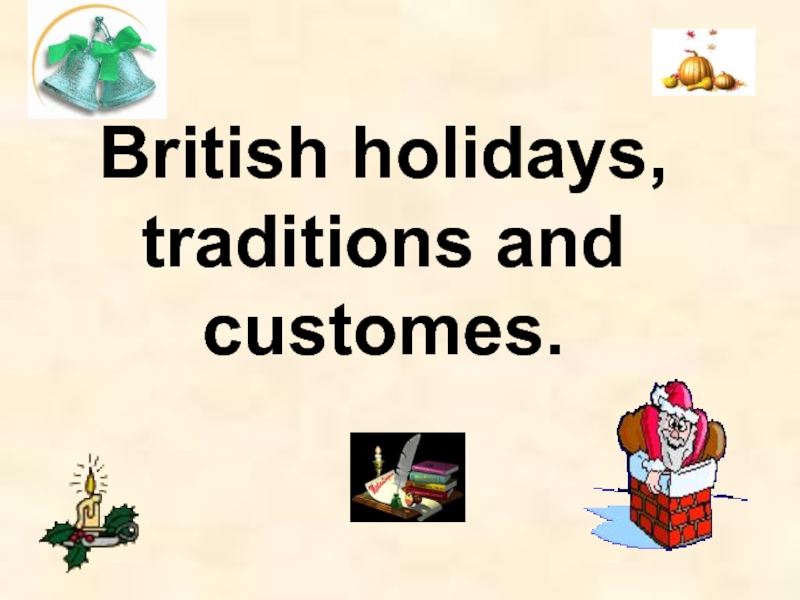
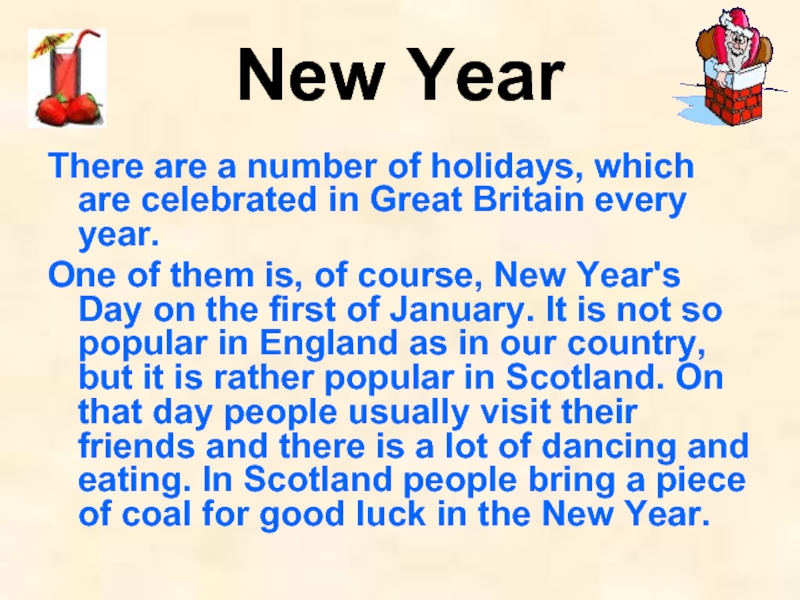
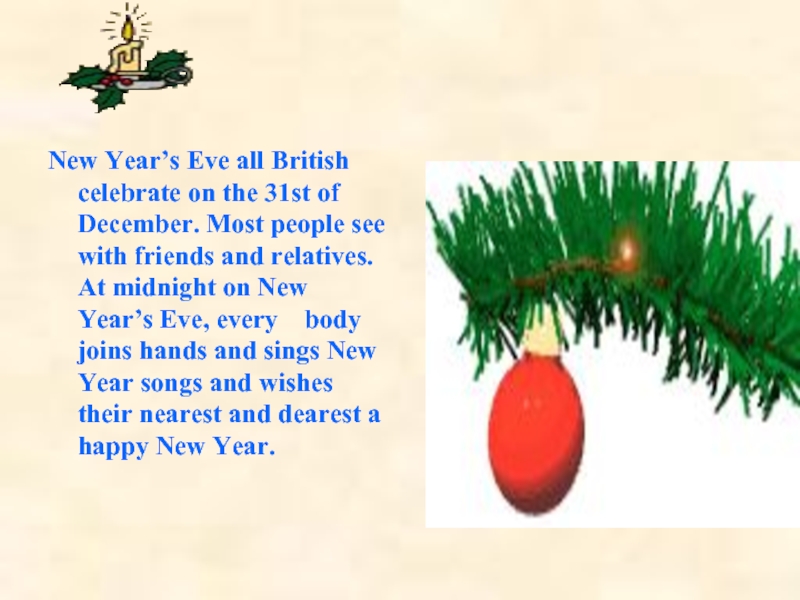
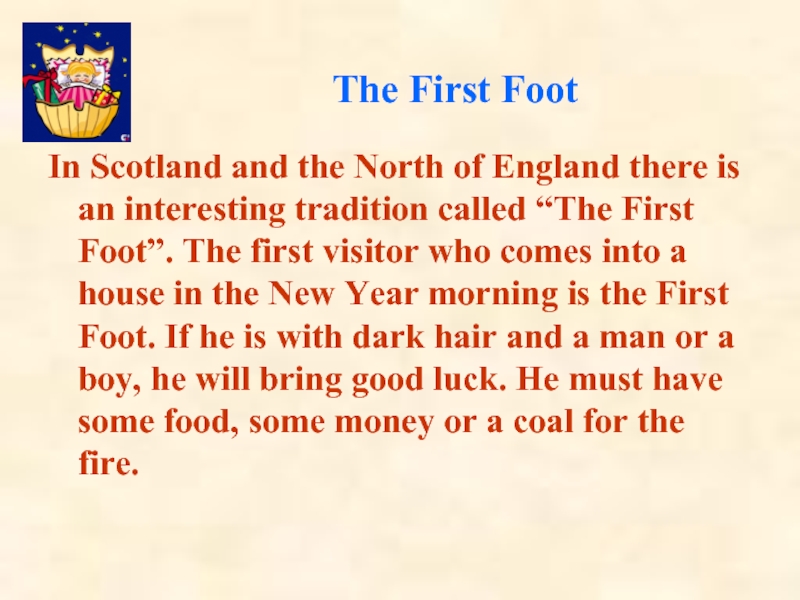
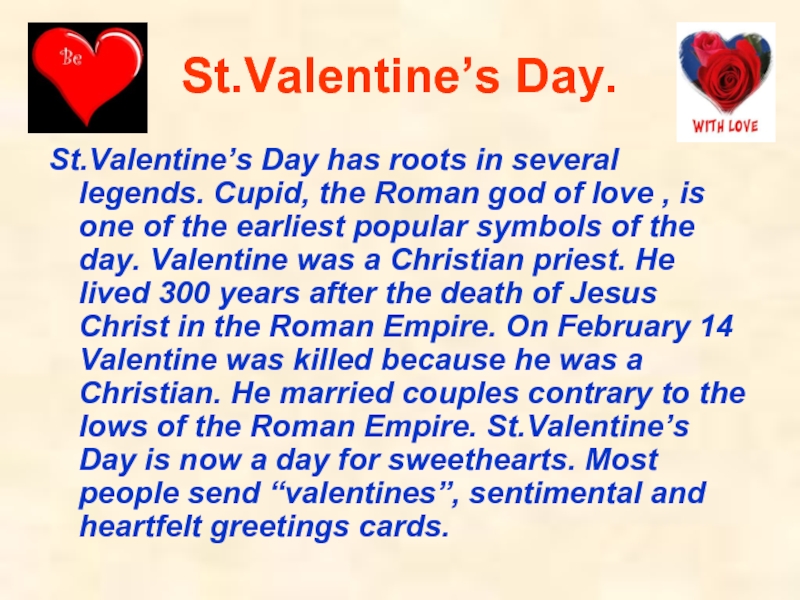
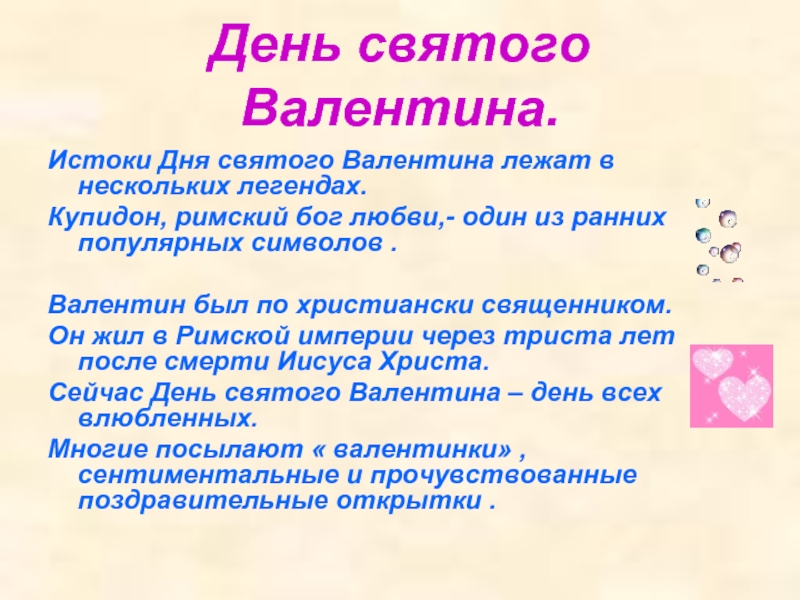
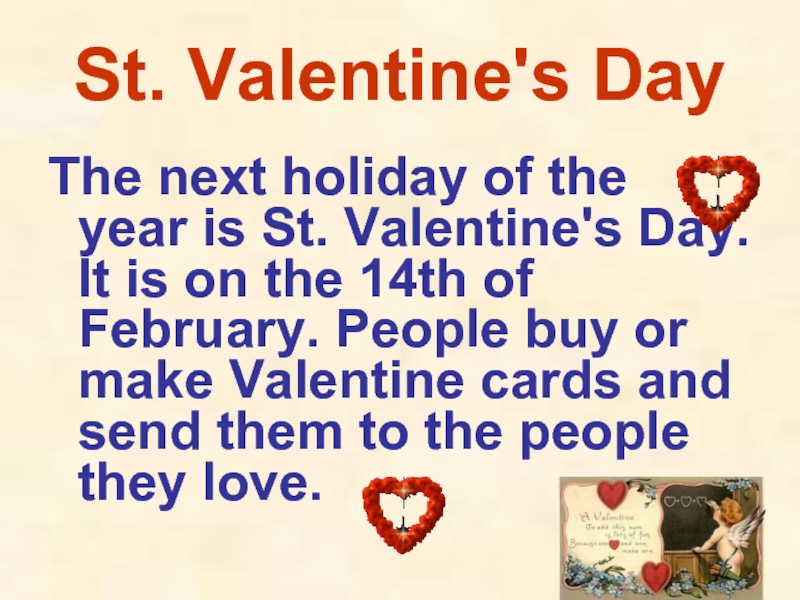

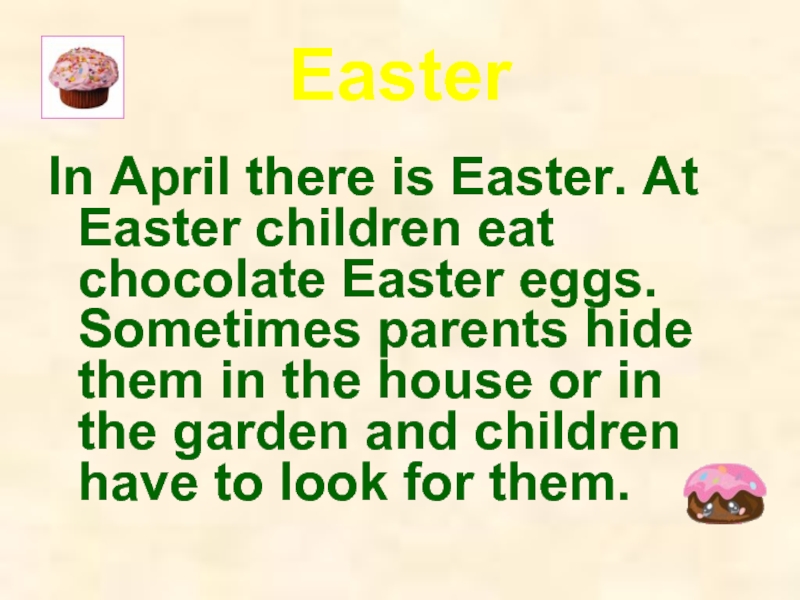
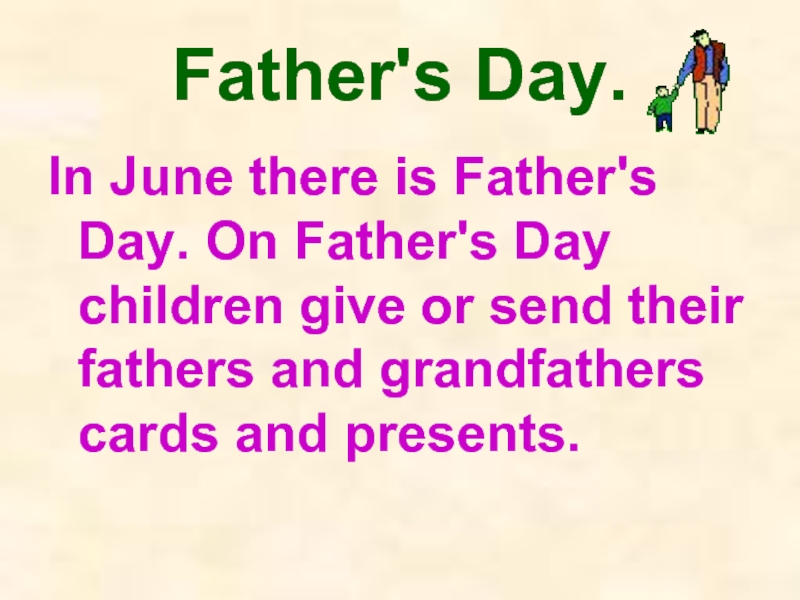
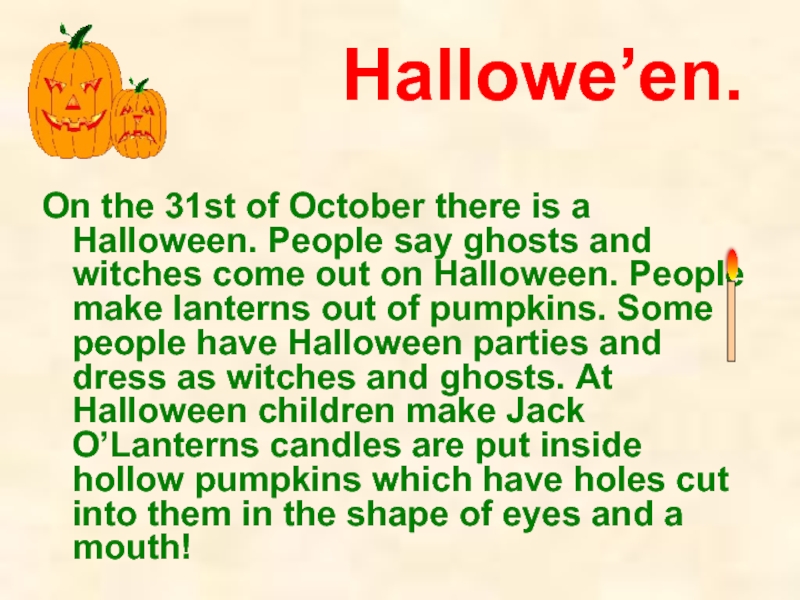
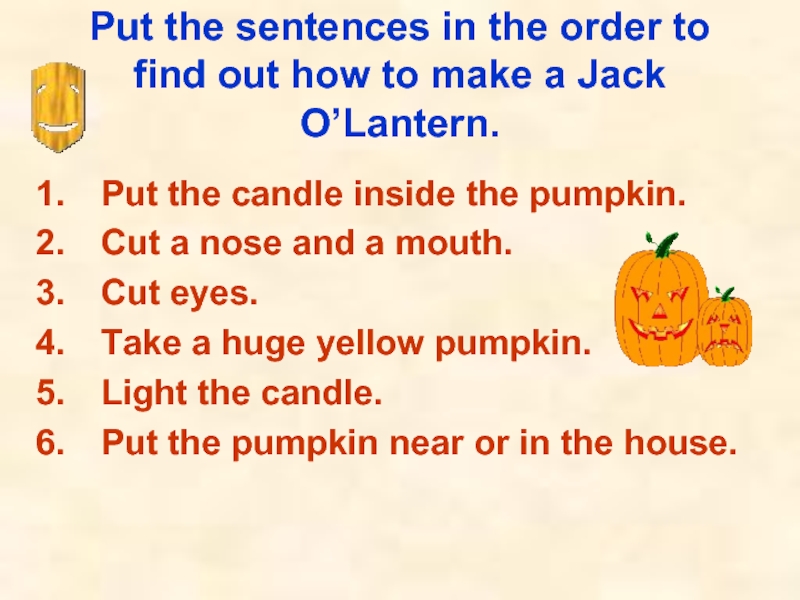
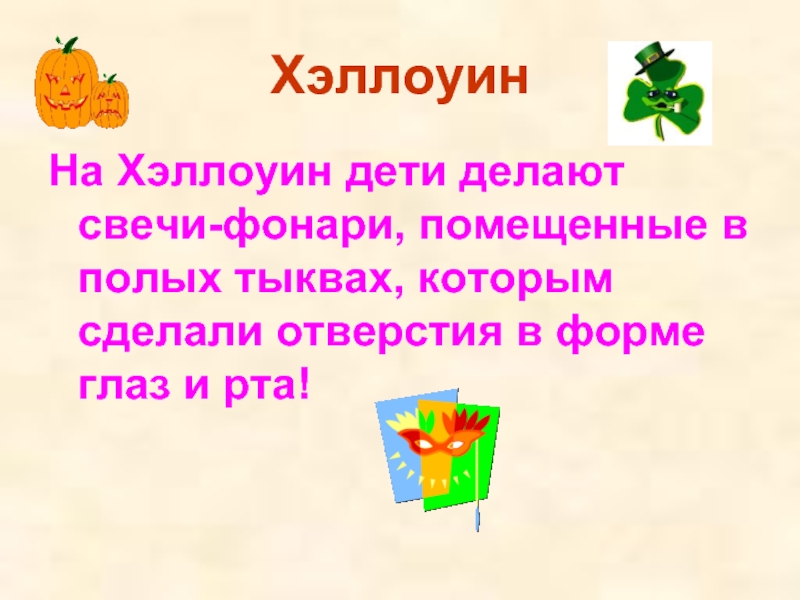
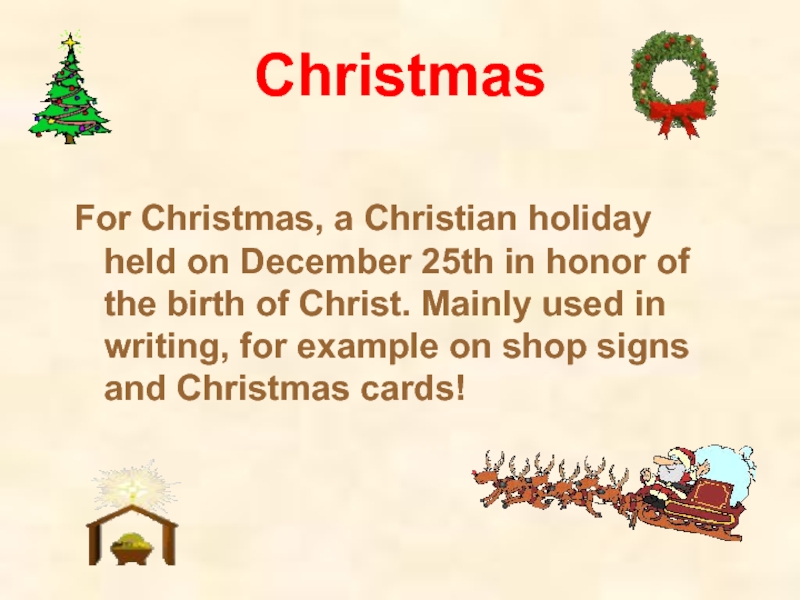
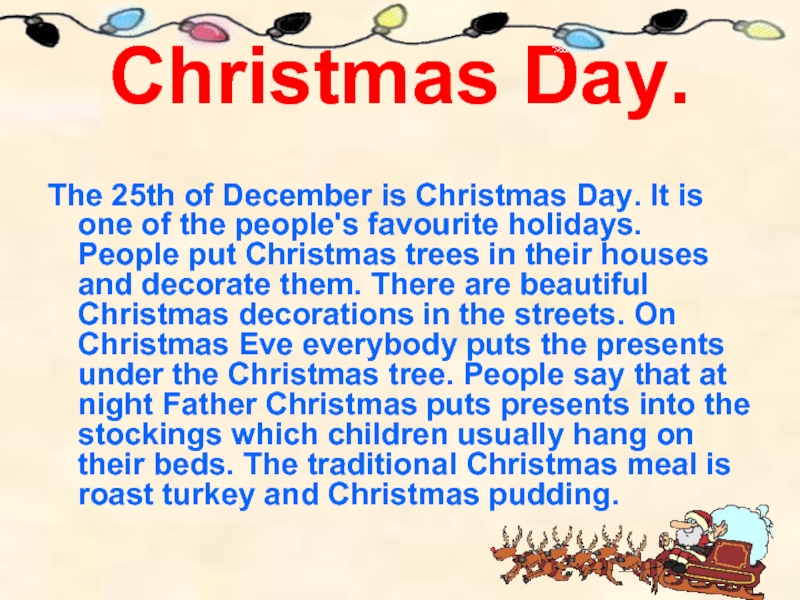
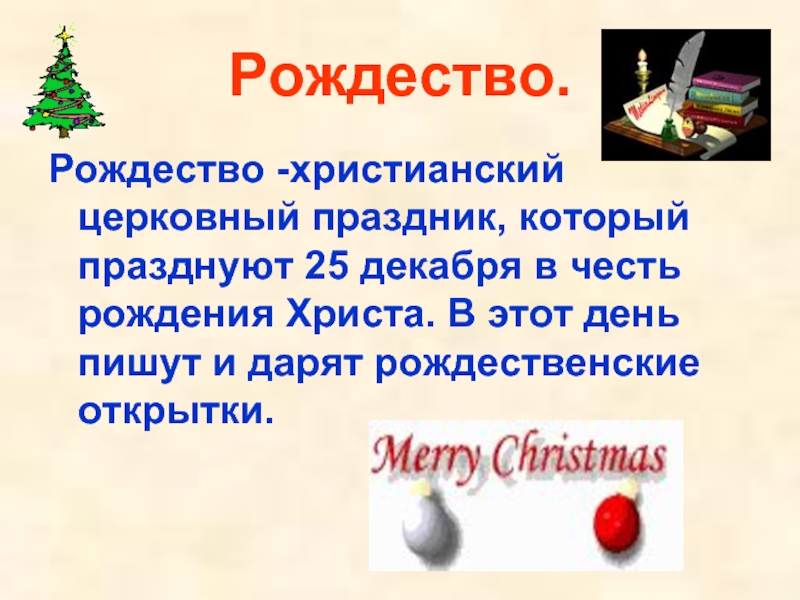
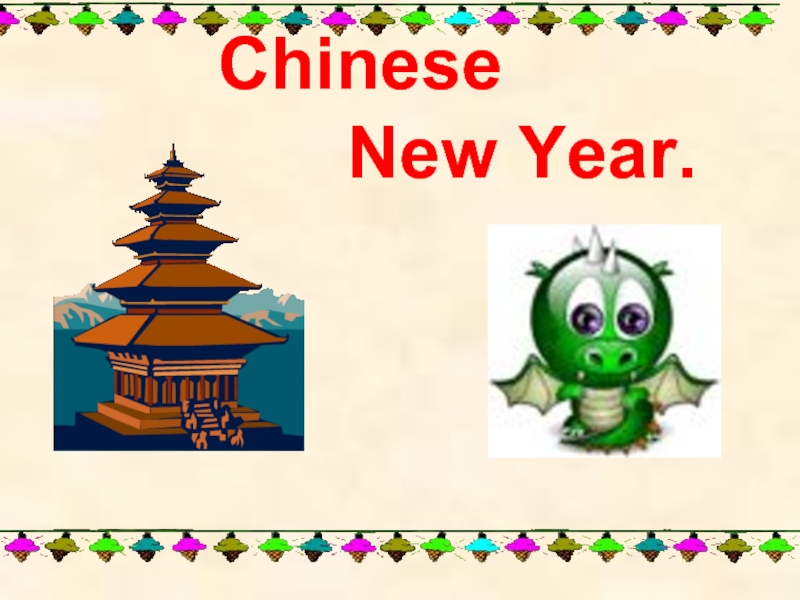
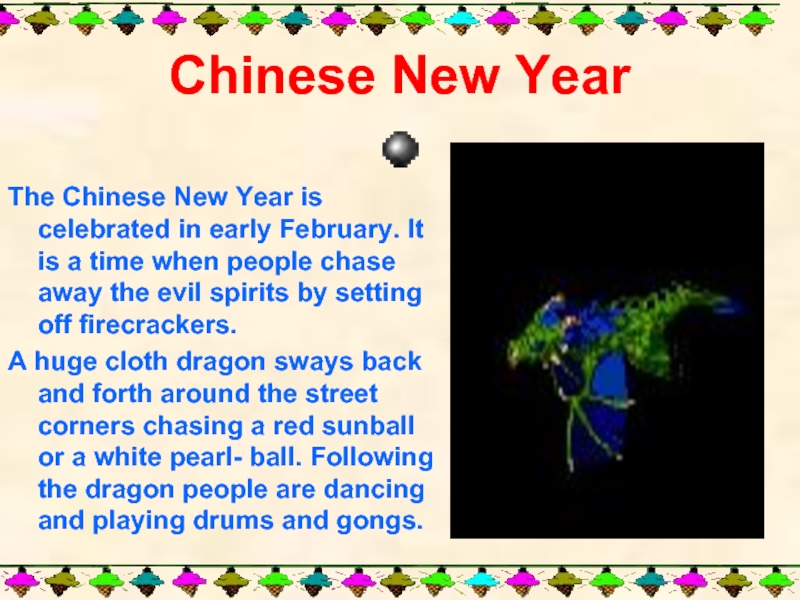
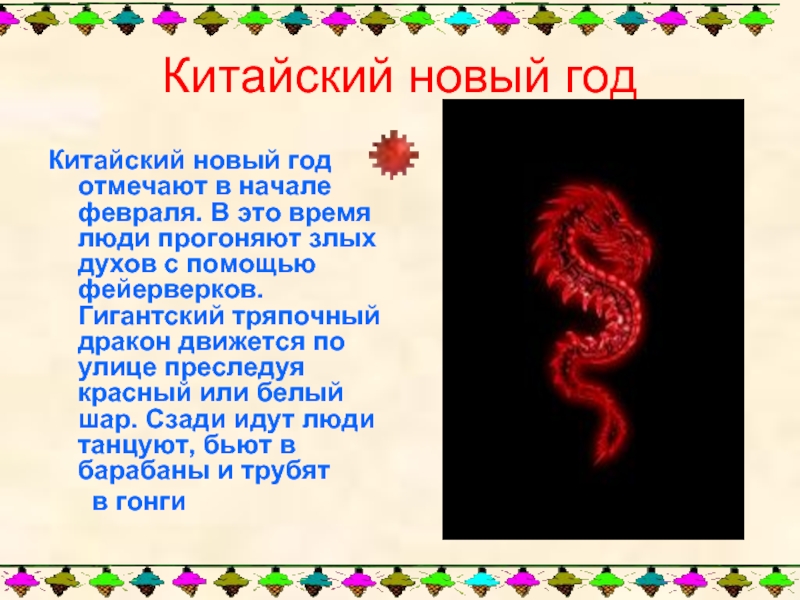
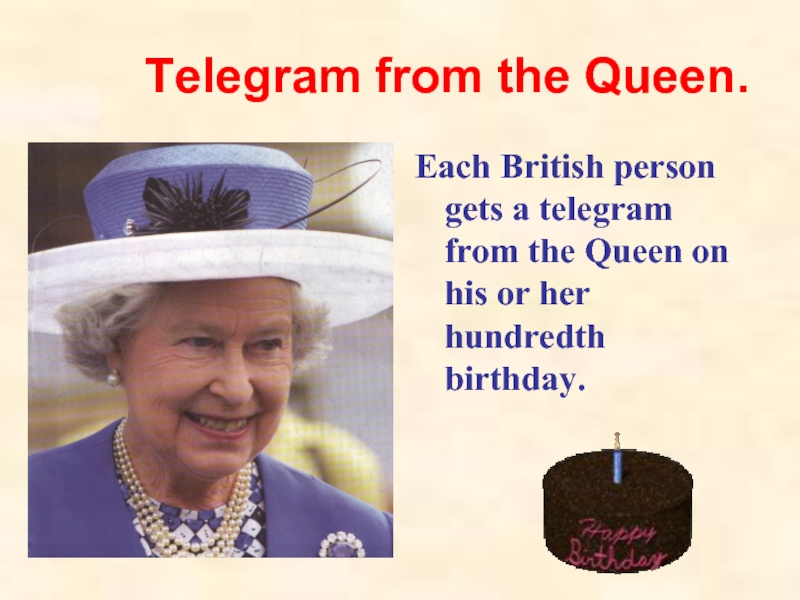
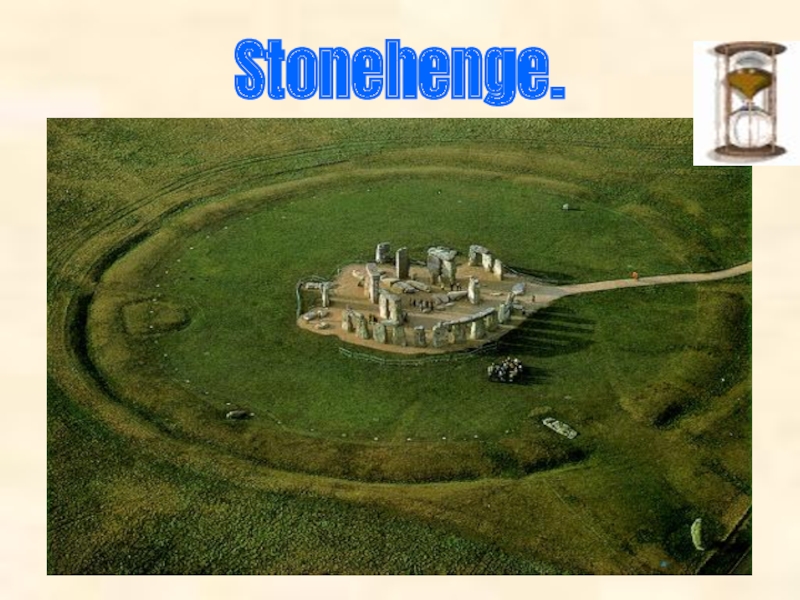
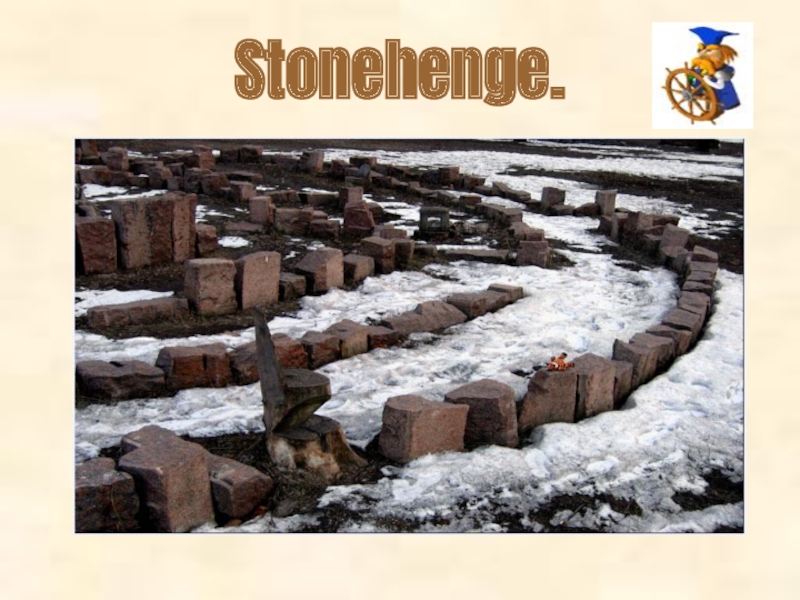
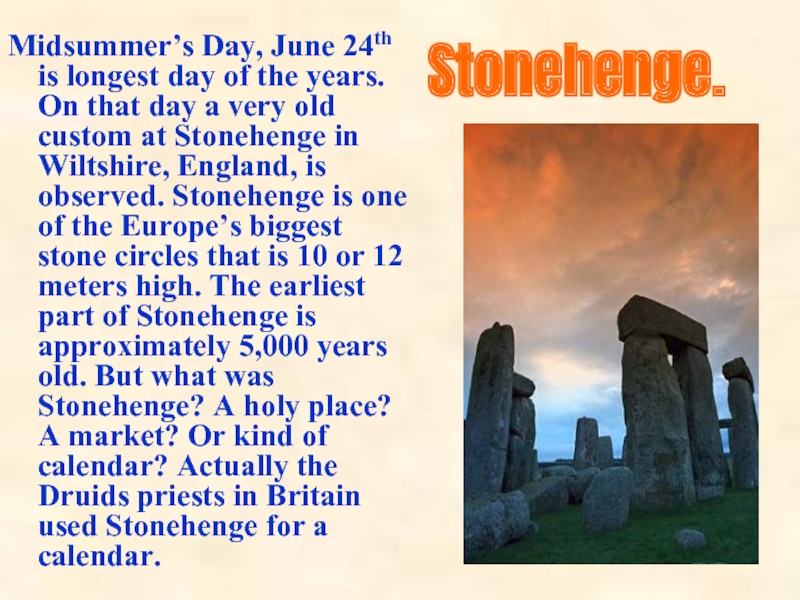
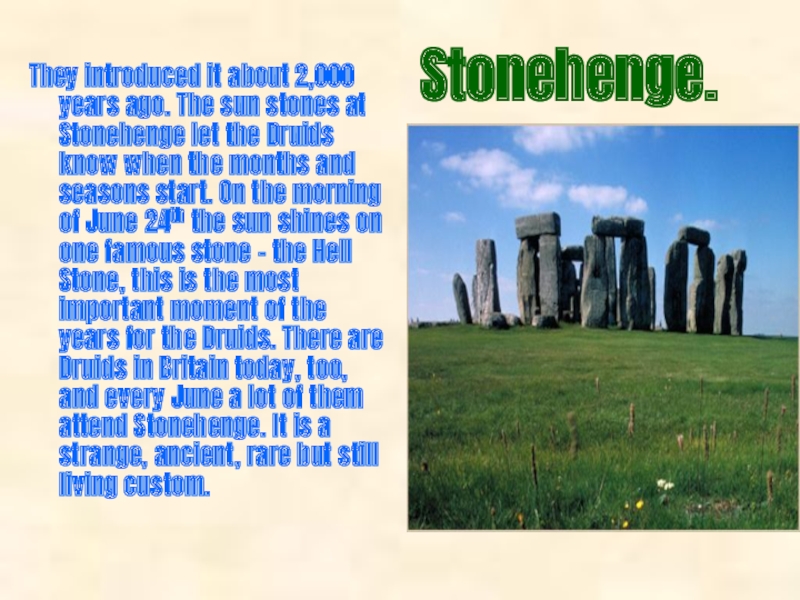
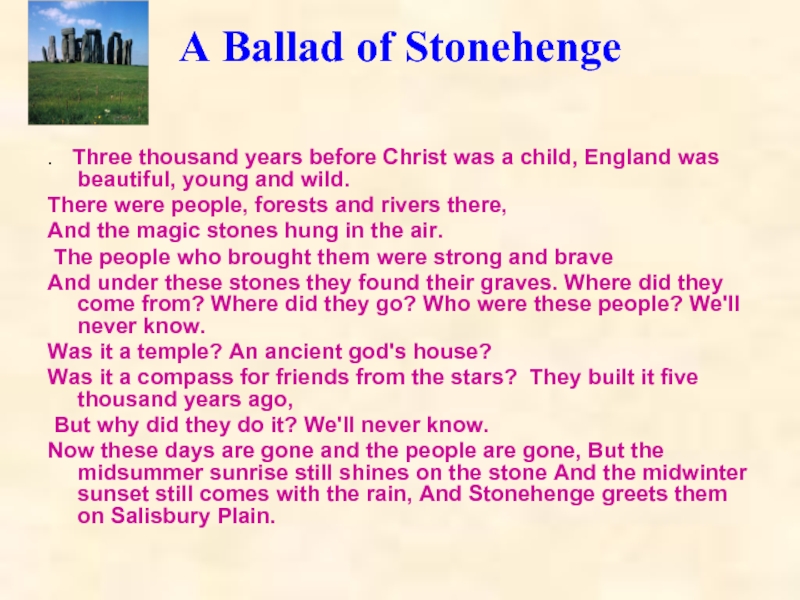
![Christ [kraist] — Иисус Христосwild [waild] — дикийforest ['forist] — лесhang — висетьancient ['einjant] —](/img/tmb/2/150014/1aa54c820e32744c5277d65d29853e6b-800x.jpg)
